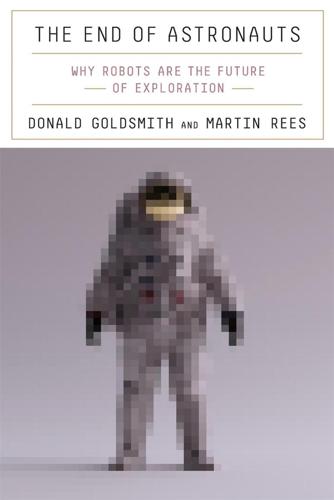
The End of Astronauts: Why Robots Are the Future of Exploration
by
Donald Goldsmith
and
Martin Rees
Published 18 Apr 2022
We shall meet these issues in greater detail in Chapter 4, which describes journeys to Mars, and in Chapter 7, which examines multigenerational, self-contained ecosystems that could either orbit the sun or travel to the stars. FINDING THE ENERGY TO ESCAPE FROM GRAVITATIONAL WELLS Part of the challenge presented by travel through space depends, of course, on the distance to be covered. There is also a second, somewhat subtler factor: the depth of the “gravitational well” that inhibits escape from any sizable object. The concept of gravitational wells usefully connects with Einstein’s concept of space as a three-dimensional version of a two-dimensional sheet of fabric: it is flat almost everywhere, and objects with mass bend it to produce gravitational dimples or “wells.”
…
The concept of gravitational wells usefully connects with Einstein’s concept of space as a three-dimensional version of a two-dimensional sheet of fabric: it is flat almost everywhere, and objects with mass bend it to produce gravitational dimples or “wells.” Any spacecraft traveling from Earth must expend the energy needed to climb out of our planet’s gravitational well, plus additional energy to avoid falling too rapidly into the gravitational well at its destination. Deeper wells require more energy for escape, and more massive spacecraft likewise demand more energy than less massive ones do. We can attempt to describe the depth of an object’s gravitational well by specifying the energy with which a projectile of standard mass would have to be fired to escape from it completely. This number provides only a crude measure of the energy needed for a realistic rocket, because a real rocket accelerates gradually, decreases its mass as it exhausts its fuel, and must expend extra energy to pass through a thicker atmosphere.
…
Sending material to Mars will require far less energy if we direct it from the moon rather than from Earth, even though the journeys cover the same distance. This holds true, of course, no matter where the material goes. The single greatest impediment to spaceflight resides, all too literally, in the fuel required for escape from a gravitational well, either into orbit or (with still more fuel) onto an escape trajectory. Because chemical fuel provides an inefficient method for storing energy, any rocket must leave Earth carrying fuel that weighs several times more than its structure or payload. Multistage rockets deal with this problem as best they can, by jettisoning their first stage and booster rockets once their fuel has been exhausted.
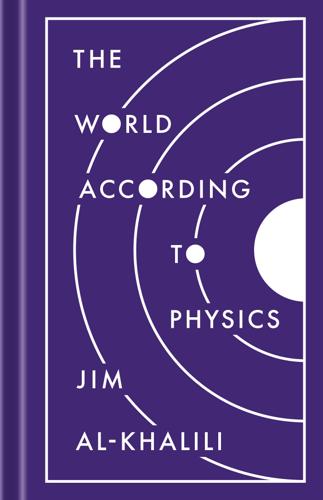
The World According to Physics
by
Jim Al-Khalili
Published 10 Mar 2020
The beautiful mathematical construct that Einstein presented to the world in 1915 is also still our current best theory on the nature of space and time, and it is extremely accurate. It also correctly predicts that a gravitational field will slow down the passage of time: the stronger the field, the slower time runs. This effect has the strange consequence that time ticks by ever so slightly slower in the Earth’s core (deep within its gravitational well) than it does on the surface. This difference in age that has accumulated over the four and half billion years of our planet’s existence means that the core is in fact two and a half years younger than the crust. Put another way, for every sixty years of Earth’s history, its core has aged one second less than its crust.
…
Just as two people moving relative to each other will, according to special relativity, measure each other’s clock ticking at a slower rate, a similar situation arises between the two observers if they are a fixed distance apart, but one of them is feeling a stronger gravitational pull—say, on the surface of the Earth, while the other is hovering far out in space. Again, the two of them will disagree on the time interval between events. As before, their clocks will tick at different rates: being deeper within the Earth’s gravitational well, where there is more spacetime curvature, the Earth observer’s clock will tick more slowly. However, unlike in special relativity, the situation here is no longer symmetrical, as she would see the clock out in space ticking more quickly. In a very real sense, gravity slows the flow of time.
…
These initial conditions, down at the quantum level, seeded spacetime with irregularities, which became writ large on the fabric of the cosmos as the universe expanded, so that a certain amount of lumpiness was automatically built into the distribution of matter. As the universe continued to ‘unwind’, matter that was close enough together to feel the pull of gravity eventually clumped together to form stars and galaxies. The molecules of hydrogen and helium gas in space fell together into the gravitational wells of the stars, causing an increase in entropy as they did so. But, crucially, this entropy did not reach a maximum—stars are not systems in thermal equilibrium, but remain reservoirs of low entropy, with the thermonuclear fusion reactions within them releasing excess energy in the form of light and heat.

Collider
by
Paul Halpern
Published 3 Aug 2009
If a black hole is near an active star, for instance as a binary system, it can gradually acquire matter from the star, due to its mutual gravitational attraction, and become more massive over time. Nothing is mysterious or unusual about this process except that black holes form particularly steep gravitational wells. Astronomers observe this accumulation of material through images of the radiation emitted as it falls inward toward the black hole. The physics of black holes derives from Einstein’s general theory of relativity. In 1915, with the ink on Einstein’s gravitational theory barely dry, German physicist Karl Schwarzschild, while serving on the Russian front in the First World War, discovered an exact solution.
…
Or maybe, as in John Cramer’s novel Einstein’s Bridge (1997), they would try to change history and prevent the LHC from being completed. A traversable wormhole is a solution of Einstein’s equations of general relativity that connects two different parts of space-time. Like black holes, wormholes are formed when matter distorts the fabric of the universe enough to create a deep gravitational well. However, because of a hypothetical extra ingredient called phantom matter (or exotic matter) with negative mass and negative energy, wormholes respond differently to intruders. While matter dropping into a black hole would be crushed, the phantom matter in a traversable wormhole would prop it open and allow passage through a kind of a space-time “throat” to another cosmic region.
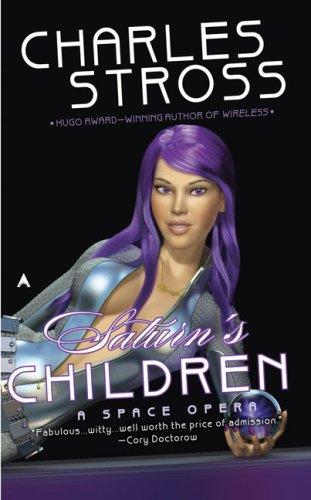
Saturn's Children
by
Charles Stross
Published 30 Jun 2008
But now I am embarking on a voyage into the outer system aboard the Indefatigable, and it makes all that has gone before seem like the lap of luxury. Our archipelagic economy obeys certain fixed rules, according to Jeeves. The inner system is rich in energy and heavy elements, with short travel time but middling-deep gravity wells. The moons of the outer-system gas giants are replete with light elements and shallower gravity wells, but their primaries are far apart. Finally, the Forbidden Cities scattered through the Kuiper Belt’s dwarf planets are loosely bound—and very far apart. Consequently, Mercury exports solar energy via microwave beam, hundreds and thousands of terawatts of the stuff, and uranium and processed metals via slow-moving cycler ship and magsail.
…
“Now that’s the problem. Living here has been more expensive than I expected. I don’t want to hit on my sisters unless . . . well. Emergencies only. And while I’ve been saving, at this rate It’ll take me another six years to raise steerage back to Luna.” Two hundred Reals, minimum—the Venusian gravity well is expensive to escape. “I was hoping you might know someone?” “I might.” He plays a brief chord progression. “Can you make yourself scarce for a few hours?” I drain the pitcher and feel the weight in my digestive tract. “How many do you need?” “Make it three: I have to make inquiries.” He takes my empty pitcher and lobs it across the bar, straight into Milton’s third hand.
…
I can repair a handful of faults myself, but right now I’m down about 4 percent below normal—which will take time to fix—and if I let it slide below 10 percent I’ll have to look for medical help. (And won’t that be fun, with my depleted savings?) So. A hotel it is. I don’t ask for much—privacy, a door I can lock, molten water on tap, pressure, and oxygen. But swift-footed Mercury is at the bottom of a very deep gravity well, eleven kilometers per second below even rosy-cheeked Venus, and not many people come to visit. Those who do are evidently rich, or they’re indentured miners, and there’s barely anything between the swank and swag of the Cinnabar Paris and an unpressurized bag hanging from the underside of a conveyor feedline.
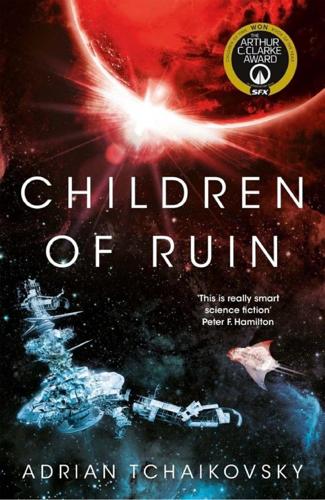
Children of Ruin
by
Adrian Tchaikovsky
Published 13 May 2019
It seems to stare out into the blackness of the sky, past the curved wall of the gas giant itself, and then tucks its head in, claws digging into the substrate beneath it. Its whole body contracts, shortening by almost a third, and then by half again in recoil as it spits a huge bolus of rock towards some distant point, enough to clear the planet’s gravity well, flashing away at such a ludicrous velocity that Helena reckons some kind of magnetic acceleration must be involved. Its siblings are doing the same, tunnelling, devouring more of the moon’s structure and then launching what they have mined at their far-off foes, whoever they are. From the state of the moon’s surface, this has been going on for some time.
…
If he had time he could trawl the internal sensor suite and maybe find recordings of some of the conversations, but he’d just have to hear it from Lante herself and deal with it on the fly. But first things first, and so he was urbane mildness personified as they talked over what had been reinstalled in the orbital module, whether they needed to do anything to stop it falling into Nod’s gravity well, whether they were going to set up shop there or not. Lante subsided and Rani took over with the technical details. Baltiel rubber-stamped all the various proposals, command decisions barely worthy of the name. ‘Now,’ he said, that disposed of. ‘You’ve been busy.’ For a moment the tension in the room was almost overtly mutinous.
…
Twelve days later, with Lortisse now ambulatory in a medical exoskeleton, cracking weak jokes with Rani and eating solids, Lante sent Baltiel a priority request to speak, all the urgent flags up, requires immediate Overall Command action. And that’s it, then. The thought of someone remaking him into a decisive commander was only slightly abhorrent, but it was still a gradient he had to overcome, a gravity well to escape, even momentarily. He was only surprised she hadn’t just acted, and asked forgiveness of the new man of purpose her altered prescription had created. Perhaps she, too, felt something of his lethargy. The Lante that greeted him had no lethargy in her, though. Instead she looked terrified.
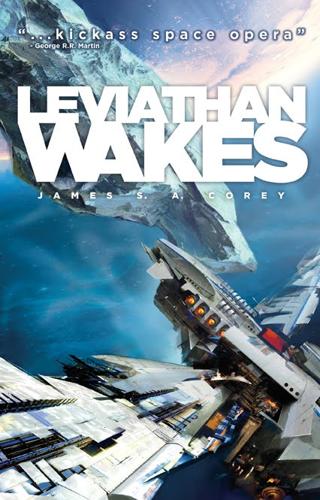
Leviathan Wakes
by
James S. A. Corey
Published 14 Jun 2011
“No flying in atmosphere until we get some parts, but she’ll do fine for fifty thousand klicks in vacuum.” “You’re sure of that?” “Naomi said it. That makes it true.” McDowell rose, unfolding to almost two and a quarter meters and thinner than a teenager back on Earth. Between his age and never having lived in a gravity well, the coming burn was likely to be hell on the old man. Holden felt a pang of sympathy that he would never embarrass McDowell by expressing. “Here’s the thing, Jim,” McDowell said, his voice quiet enough that only Holden could hear him. “We’re required to stop and make an attempt, but we don’t have to go out of our way, if you see what I mean.”
…
Living in the tradition of Al Capone and Hamas, the IRA and the Red Martials, the OPA was beloved by the people it helped and feared by the ones who got in its way. Part social movement, part wannabe nation, and part terrorist network, it totally lacked an institutional conscience. Captain Shaddid might not like Havelock because he was from down a gravity well, but she’d work with him. The OPA would have put him in an airlock. People like Miller would only rate getting a bullet in the skull, and a nice plastic one at that. Nothing that might get shrapnel in the ductwork. “I don’t think so,” he said. “It doesn’t smell like a war. It’s… Honestly, sir, I don’t know what the hell it is.
…
“So. Friend. You only kick helpless people to death, or can anybody join in?” Miller asked, his voice conversational but echoing out of the dock speakers like a pronouncement from God. “The fuck you barking, Earth dog?” Shirtless said. “Earth?” Miller said, chuckling. “I look like I grew up in a gravity well to you? I was born on this rock.” “Inners kibble you, bitch,” Shirtless said. “You they dog.” “You think?” “Fuckin’ dui,” Shirtless said. Fucking true. He flexed his pectorals. Miller suppressed the urge to laugh. “So killing that poor bastard was for the good of the station?” Miller said.

Accelerando
by
Stross, Charles
Published 22 Jan 2005
She's not sure what causes the beam downtime (Pierre has a theory about Oort cloud objects occulting the laser, but she figures it's more likely to be power cuts back at the Ring), but the consequences of losing power while maneuvering deep in a quasi-stellar gravity well are much more serious than a transient loss of thrust during free interstellar flight. "Let's just play it safe," she says. "We'll go for a straight orbital insertion and steady cranking after that. We've got enough gravity wells to play pinball with. I don't want us on a free-flight trajectory that entails lithobraking if we lose power and can't get the sail back." "Very prudent," Boris agrees. "Marta, work on it."
…
Ivan the extreme concrete geek has an arm round her shoulders, and she leans against him; he raises his glass, too. "Lots more launchpads to rubberize!" "To NASA," Bob echoes. They drink. "Hey, Manfred. To NASA?" "NASA are idiots. They want to send canned primates to Mars!" Manfred swallows a mouthful of beer, aggressively plonks his glass on the table: "Mars is just dumb mass at the bottom of a gravity well; there isn't even a biosphere there. They should be working on uploading and solving the nanoassembly conformational problem instead. Then we could turn all the available dumb matter into computronium and use it for processing our thoughts. Long-term, it's the only way to go. The solar system is a dead loss right now – dumb all over!
…
The best brains flourish in free fall, minds surrounded by a sapient aether of extensions that out-think their meaty cortices by many orders of magnitude – minds like Amber, Queen of the Inner Ring Imperium, the first self-extending power center in Jupiter orbit. Down at the bottom of the terrestrial gravity well, there has been a major economic catastrophe. Cheap immortagens, out-of-control personality adjuvants, and a new formal theory of uncertainty have knocked the bottom out of the insurance and underwriting industries. Gambling on a continuation of the worst aspects of the human condition – disease, senescence, and death – looks like a good way to lose money, and a deflationary spiral lasting almost fifty hours has taken down huge swaths of the global stock market.
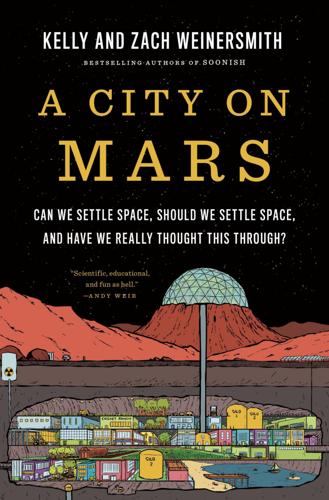
A City on Mars: Can We Settle Space, Should We Settle Space, and Have We Really Thought This Through?
by
Kelly Weinersmith
and
Zach Weinersmith
Published 6 Nov 2023
Once orbital, a relatively modest use of propellant will sling you elsewhere. You can imagine space as a sort of giant air-hockey board with deep wells pitted in its surface. Once you’re out of the well, or spinning on its rim, it’s pretty easy to get where you’re going as long as you have the time to get there. Earth is a deep gravity well, the Moon much less so. Throw in the fact that the Moon hasn’t got a pesky atmosphere to slow down launches, and you’ve got a great platform for throwing things into space, at least compared to Earth. You could plausibly even set up a mass driver—basically a roller coaster to space, no rocket required—something nearly impossible on Earth.
…
In our experience talking to space architects, the phrase “I hate those” was used, because they gave the public a thoroughly misleading idea of what’s plausible. The Case Against Open Space Settlements Any near-term design for such a station will likely be built from parts created on Earth. But Earth is a pretty deep gravity well to rocket out of, and typical proposals for open space settlements require millions of tons of material. Let’s suppose you can launch fifty tons of stuff per rocket—about as much as the largest rockets ever launched from Earth. A million-ton space station would require twenty thousand such rocket launches.
…
That still wouldn’t necessarily argue for space stations as the default mode of off-world life, since they could just be something like orbital nurseries. Not exactly the vision of Star Trek, but anyway a lot cuter. Second, there might be utility for these things if you assume a developed space economy is already established. Space stations have a very shallow gravity well, meaning spacecraft could come and go without costly fuel expenditures. Also access to multiple gravity regimes inside the station might provide all sorts of side benefits. In a rotating space cylinder, the artificial gravity level depends on your position in the wheel. Without getting into the math, the basic deal is that gravity is highest at the rim, diminishing as you approach the axis.
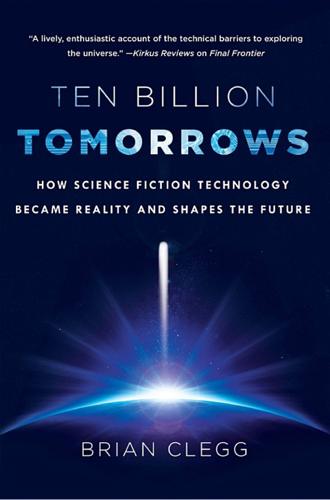
Ten Billion Tomorrows: How Science Fiction Technology Became Reality and Shapes the Future
by
Brian Clegg
Published 8 Dec 2015
Such devices, sometimes called von Neumann probes after the mathematician John von Neumann who worked on the concept, do also have a practical problem that to make an easily replicable device mechanically would require it to be simple—and yet the task it has to perform, refining ores, producing complex machinery and electronics, is very complex. We simply couldn’t build a device that could replicate itself from raw materials like this at all, let alone one that then had the ability to power itself out of the Earth’s gravity well and navigate between the stars. It may well never be possible. The final option for consideration is that aliens know that we’re here, but don’t want us to be aware of their existence. Perhaps they have cloaking technology (see here) to be able to move among us unseen. Perhaps they have some kind of noninterference directive as in Star Trek (though that never seemed to stop Captain Kirk getting involved) or they might simply regard us as too unpleasant or inferior to bother to mix with.
…
Unlike a rocket, which continues to be powered until its fuel runs out or it is switched off, a cannon can only impart momentum to the payload while that projectile is within the barrel. As soon as the shell emerges, the only forces acting on it are the Earth’s gravity and air resistance, both of them slowing the projectile down. So the shell has to be moving sufficiently quickly to get away from the Earth’s gravity well, requiring a speed of around 11.2 kilometers per second (7 miles per second). This need for speed means that the vessel has to endure a huge amount of acceleration in the brief time it is in the barrel and is being pushed forward by the expanding gases of the propellant. The shorter the barrel, the faster the required acceleration.
…
It’s surprising, given the experts involved, that there are a couple of major technical issues with the spaceship in Destination Moon. Most obvious is that stylized 1950s shape, so familiar from the covers of science fiction magazines of the period. There are no stages, something that is essential in a rocket leaving the Earth, as the sheer amount of fuel needed to get out of the Earth’s gravity well requires huge tanks, which are themselves very heavy—dropping stages was known to be an important essential for constructing a true space rocket from the 1920s, and it’s surprising Oberth didn’t pick up on this as he had in the earlier movie. Presumably he was overridden by the art department.
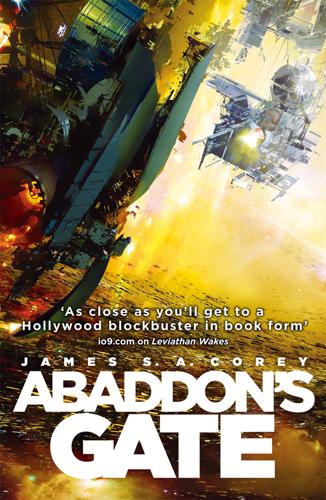
Abaddon's Gate
by
James S. A. Corey
Published 3 Jun 2013
Her tai chi instructor would have looked away in embarrassment. The bodybuilder sloped down to the floor, blood pouring from his mouth. The insect-eyed man pulled away from her, which was the wrong thing to do. She hugged his locked joints close to her body and swung from her hips. He was bigger than she was, had lived in the gravity well all his life. He buffed up with steroids and his own cheap augmentations. She didn’t need to be stronger than him, though. Just stronger than the little bones in his wrist and elbow. He broke, dropping to his knee. Melba—not Clarissa—swung around him, sliding her right arm around his neck, then locking it with the left, protecting her own head from the thrashing that was about to come.
…
Chapter Seven: Melba I f the Earth-Mars alliance hadn’t collapsed, if there hadn’t been a war—or two wars depending on how the line between battles was marked—civilian ships like the Cerisier would have had no place in the great convoy. The ships lost at Ganymede and in the Belt, the skirmishes to control those asteroids best placed to push down a gravity well. Hundreds of ships had been lost, from massive engines of war like the Donnager, the Agatha King, and the Hyperion to countless small three- and four-person support ships. Nor, Melba knew, were those the only scars. Phobos with its listening station had become a thin, nearly invisible ring around Mars.
…
When she was done, everything Holden had touched would be tainted by association, including the destruction of her family. Her father. Somewhere deep in the structure of the Cerisier, one of the navigators started a minor correction burn and gravity shifted a half a degree. The couch moved under her, and she tried not to notice it. She preferred the times when she could pretend that she was in a gravity well to the little reminders that she was the puppet of acceleration and inertia. Her hand terminal chimed once, announcing the arrival of a message. To anyone who didn’t look carefully, it would seem like just another advertisement. An investment opportunity she would be a fool to ignore with a video presentation attached that would seem like corrupted data to anyone who didn’t have the decryption key.

Asteroid Mining 101: Wealth for the New Space Economy
by
John Lewis
Published 22 Jul 2014
The mass of rocket propellant needed for a given delta V is proportional to the mass of material to be returned and exponentially dependent on the delta V. For this reason, NEAs can provide excellent mass returns to Earth or to Earth orbit. By comparison, a return mission from the surface of the Moon requires a delta V of about 3.2 km/s, comprising escape from the lunar gravity well and transfer to an Earth-return trajectory. Thus exporting materials from the Moon to Earth is far harder than exporting the same mass of materials from Phobos or Deimos to Earth. The Martian moons in turn are far inferior to the best NEAs for return of asteroid materials to LEO or Earth. Remote Spacecraft Observations of NEAs The Infrared Astronomical Satellite (IRAS), launched into polar orbit in 1983, was a joint US/Dutch/British survey of the sky at thermal infrared wavelengths of 12, 25, 60, and 100 micrometers.
…
In a 100%-recycling regime, the required inventory could easily be 10 times smaller. 3 Carbon inventories assume 100 g of plant carbon per gram of human carbon 4 Nitrogen inventories include1000 m3 of habitat volume per person plus organic nitrogen. Although hydroponic culture of food plants has obvious appeal, the reasons for dirt-less agriculture are derived from the perceived necessity of lifting all materials out of Earth’s deep gravity well, with associated high launch costs. Thus hydroponics makes sense when used in the context of Earth-launched, Earth-orbiting space stations or colonies. The launch-cost problem does not arise when deriving raw materials from micro-g or milli-g asteroids. There, the silicates are essentially “free” and have no other major uses besides shielding.
…
A word is needed here on the absence of non-ferrous metals from this list. Where are aluminum, magnesium, and titanium? The problem is that these elements all form very stable oxides that require vast amounts of energy to extract, purify, and fabricate. Aerospace engineers accustomed to launching payloads from Earth’s deep gravity well are rightly concerned about minimizing launch mass, which leads them to require light-weight, strong non-ferrous metals. They therefore accept the high energy cost of manufacture of these metals because it saves them even more energy and expense in launch costs: both ores and reducing agents such as coke and coal are abundant and cheap on Earth.
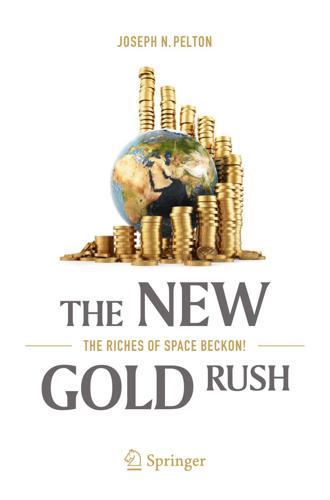
The New Gold Rush: The Riches of Space Beckon!
by
Joseph N. Pelton
Published 5 Nov 2016
The roar of a rocket blast and vibrating force of a Saturn V launch as part of the Apollo Moon mission is something that is thrilling and impossible to forget if you were ever there. However, the future is about change, and innovation still has far to go. In 20–50 years, the idea that the best way out of Earth’s gravity well is to strap people on top of a controlled bomb explosion may grow to be seen as quaint or even primitive. It may 1 day be possible to use the Earth’s electromagnetic field and its rotational or centripetal force to lift people and cargo at least to Clarke (geosynchronous) orbit. The use of tethers to lift mass into space, the construction of a space elevator or funicular to Clarke orbit , or even a lunar-Earth connector might 1 day make space travel three things it is not today: (1) much, much safer; (2) significantly lower in cost; and (3) a global utility that is available to all people and organizations that would aspire or have a purpose to go into space.
…
You might use similar amounts of energy regardless of whether you are going to the Moon, Mars or somewhere else. The time to travel there, of course, can be greatly different, but the power or energy levels that are needed to be spent to get there are not greatly different. Also one can use the gravity wells represented by the planets and the Sun to speed up or slow down spacecraft, and this process, called “gravity assist ,” can allow enormous speeds to be attained by spacecraft. In short, once humans find a way to efficiently get as far away from Earth as geo orbit (at 35,780 km, or 22,270 miles) the rest of the Solar System becomes accessible.
…
If this is the situation on Earth, where the rule of law within a twenty-first century world is supposed to be in place, one must be fearful of the future for outer space. One can only imagine the possible conflicts that can evolve in the “Wild West” territories represented by the expanding zones of human influence in all three areas—within inner space, i.e., the protozone, within various Earth orbits, and above Earth orbit in true outer space above the world’s gravity well. Outer Space Security in a Twenty-First Century World Thus, many concerns exist today with regard to the protozone. These include the exploitation of space natural resources and national security activities in outer space and even about new systems to be deployed in Earth orbit, especially since there are new proposals to deploy hundreds if not many thousands of satellites in gigantic constellations for new applications such as broadband communications.
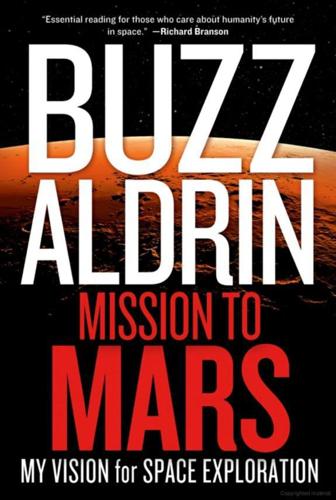
Mission to Mars: My Vision for Space Exploration
by
Buzz Aldrin
and
Leonard David
Published 1 Apr 2013
We ought to redirect our efforts to becoming both more ambitious and more efficient at the same time, testing a reusable model for long-term space exploration. We can then redirect the Orion multipurpose crew vehicle toward becoming a workable and really sustainable deep space ferry. The cost-effectiveness of going from our moon to one of the moons around Mars is far greater than falling back to Earth each time and then clawing ourselves out of the gravity well with another throwaway spacecraft. For example, a beefed-up Block 2 version of Orion can be a crew test vehicle for aerocapture at Earth as well as at Mars. Aerocapture is “putting on the brakes” proficiency, using the drag of a planetary object’s atmosphere to decelerate. This fuel-saving advance requires the spacecraft to have sufficient thermal protection and the ability to precisely guide itself during the maneuver.
…
A spacecraft positioned there has to use modest rocket firings or other means to stay put. Orbits around these points are called “halo orbits.” Webber advocates that spot as the next step beyond suborbital flight and low Earth orbit, calling it “Spaceport Earth”—a combined hotel/space station at the rim of Earth’s gravity well. Webber argues that NASA can use Spaceport Earth as the starting and finishing point for journeys to and from Mars and beyond. Tourists going up and down between low Earth orbit and Spaceport Earth in its earliest form effectively open up—and pay for—this new part of the orbital infrastructure.
…
Low-latency yields the appearance of “being there” in a way that is near real-time believable. The ability to extend human cognition to the moon, Mars, near-Earth objects, and other accessible bodies helps limit the challenges, cost, and risk of placing humans on perilous surfaces or within deep gravity wells. Let me point out the advances in telerobotics here on Earth. Human cognition and dexterity are already reaching the deepest oceans, pulling out resources from dangerous mines, performing high-precision surgery from a distance—all this as aerial drones, piloted by humans in far-off command centers, fly overhead.

Voyage
by
Stephen Baxter
Published 23 May 2011
The dribble made it look as if the ET had been wounded, like a great harpooned whale. The tank rapidly receded from Ares, falling away and tumbling slowly. Both tanks were moving quickly enough to have escaped Earth’s gravity well with Ares. The tanks would become independent satellites of the sun, lasting maybe for billions of years before falling into a planet’s gravity well. She waved the tank good-bye, with a little flourish of her gloved fingers. Good luck, baby. The engines finally died. She felt it as an easing away of acceleration — a gentle reduction of the subliminal noise and vibration from the remote engines.
…
Whatever else happened, Ares was to continue on, up to cutoff of the MS-II’s main engines. On to orbit. “Ares, you are go at five plus thirty, with ECO at eight plus thirty-four.” Ares had reached Mach 15, at an altitude of eighty miles. And still the engines burned; still they climbed upward. Earth’s gravity well was deep. “Eight minutes. Ares, Houston, you are go at eight.” “Looking good,” Stone said. The residual engine noise and vibration died, suddenly. The recoil was powerful. York was thrown forward again, and bounced back in her canvas restraints. “ECO!” Stone called. Engine cutoff; the MS-II stage was spent.
…
A spacecraft would dive in so close to a planet that its path would be altered by that world’s gravitational field. In the swing-by — the bounce off the planet — the spacecraft would extract energy from the planet’s revolution around the sun, and so speed up; in exchange, the planet’s year would be minutely changed. In practical terms, bouncing off a planet’s gravity well was like enjoying the benefit of an additional rocket stage at no extra cost, if your navigation was good enough. “We have already studied the Mariner Mercury mission, which would have swung by Venus en route to Mercury. A direct journey would have been possible, using, for example, a Titan IIIC booster; but the gravity assist would have allowed the use of the cheaper Atlas-Centaur launch system…” “Yeah,” a voice called from the audience, “but Mariner Mercury got canned.
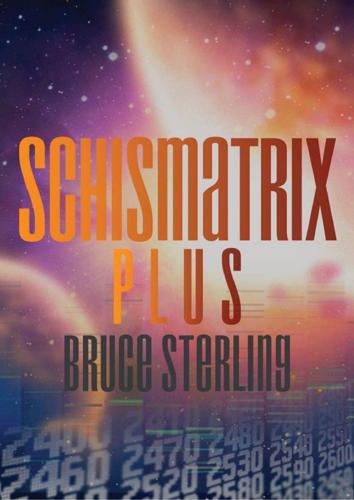
Schismatrix Plus
by
Bruce Sterling
Published 1 Jan 1995
A hush fell, but Constantine gestured urbanely, and his fellow genetics picked up the tag-ends of their conversations. “Hello, cousin,” Constantine said. Lindsay nodded. “A fine group of congenetics, Philip. Congratulations on your siblings.” “Good sound stock,” Constantine agreed. “They handle the gravity well.” He looked pointedly at Lindsay’s wife, who had shuffled tactfully toward another group, visibly troubled by pain in her knees. “I spent a lot of time on gene politics,” Lindsay said. “In retrospect it seems like an aristocratic fetish.” Constantine’s lids narrowed over the black adhesive lenses.
…
You start trifling with ecology and it’s hard to find a place to stop. I’ve had a slip of this cat’s skin shipped off to the Ring Council. Have to clone off a whole gene-line of them. Because of the mice, you know. Little vermin are overrunning everything.” “A planet might be better,” Lindsay said. “More space.” “I don’t hold with messing with gravity wells,” Pongpianskul said. “It’s just more room for error. Don’t tell me you’ve fallen for that, Mavrides.” “The world needs dreams,” Lindsay said. “You’re not going to start on about levels of complexity, I hope.” Lindsay smiled. “No.” “Good. When you came in here unwashed and with no shoes on, I concluded the worst.”
…
The specimen hold had a hatchway installed, but there was no room for an airlock in the crew’s compartment. The three of them had been welded in. Pilot hadn’t liked it. Pilot could be trusted, though. He cared nothing for Europa or their plans, but he relished the chance to count coup on the ancestral gravity well. He had been everywhere, from the turbulent fringes of the solar corona to the cometary Oort Cloud at the edge of circumsolar space. He was not human, but for the time being he was one of them. The scanners began to clear. Deceleration faded into the heavy tug of Earth gravity. Lindsay slumped in his seat, wheezing as the cuirass pumped his lungs.

Aurora
by
Kim Stanley Robinson
Published 6 Jul 2015
This was probably irrelevant to Freya’s feelings of weightedness. They had to prepare several ferries in their landing fleet, and move them from storage to the launch bays. They were going to descend to their new home in little landers they called ferries, small enough that they would be able to accelerate them back up out of the moon’s gravity well, to return to the ship when they needed to. The idea was that first they would send down the designated suite of robot landers, full of useful equipment; then the first ferries containing humans would go down and land by the robotic landers. These were now targeted for Aurora’s biggest island.
…
Food also was a factor; if too many people came down, they could neither grow enough food on Aurora, nor keep growing it on the ship to send down to Aurora, having to an extent abandoned the farms on the ship. Without a careful transition they could inadvertently create food shortages in both places. And they didn’t have the means to get people back up to the ship very quickly. Return was not easy; Aurora’s gravity well and atmosphere meant their spiral launch tube assembly, now built and working well, could only launch so many ferries, as they had to split water and distill the fuels, and also smelt and print the ablation plates for them to deal with the rapid launch up through the atmosphere. Return to the ship was a choke point in the process of settlement, there was no doubt of that.
…
It was a rocky moon, and completely dry except for a little comet-impact water ice. Up until now it had been presumed to be lifeless, being almost free of water. But the experience on Aurora had made them more uncertain in judging this matter. Some people pointed out that meteorites had to have been ejected from Aurora by asteroid impacts, and some of them cast up the gravity well to land on F’s Moon 2. That such rocks could have successfully transferred the Auroran life-forms, given the lack of water and air on F’s moon, seemed unlikely, but it could not be entirely ruled out. Life was tenacious, and the pathogen on Aurora was still not understood. Even naming it was a problem, as some called it the cryptoendolith, others the fast prion, others the pathogen, and others simply the bugs, or the thing, or the stuff, or the alien, or the whatever.

Effective Programming: More Than Writing Code
by
Jeff Atwood
Published 3 Jul 2012
So while we care about the skills of a potential employees, whether or not they “get” us is a major part too. I realize that not every business has a community around what they do, but if you do have a community, you should try like hell to hire from your community whenever possible. These are the folks who were naturally drawn to what you do, that were pulled into the gravitational well of your company completely of their own accord. The odds of these candidates being a good cultural fit are abnormally high. That’s what you want! Did a few of your users build an amazing mod for your game? Did they find an obscure security vulnerability and try to tell you about it? Hire these people immediately!

Diaspora
by
Greg Egan
Published 1 Jan 1997
Most were discovered as pulsars, their spinning magnetic fields creating a rotating beam of radio waves by dragging charged particles around in circles at close to lightspeed, or as X-ray sources, siphoning material from a gas cloud or a normal companion star and heating it millions of degrees by compression and shock waves on its way down their tight, steep gravity well. Lac G-1 was billions of years old, though; any local reservoir of gas or dust which might have been used to make X-rays was long gone, and any radio emissions had either grown too weak to detect, or were being beamed in unfavorable directions. So the system was quiet across the electromagnetic spectrum, and it was only the gravitational radiation from the dead stars' slowly decaying orbit that betrayed their existence.
…
Paolo surveyed the hall. Less than a hundred citizens had decided to be cloned, but half the polis had been through the Exhibition. It was almost deserted now, though, and the angle of the light, cued to the number of visitors, gave an impression of late afternoon. They approached the first exhibit, a comparison of gravity wells in three and five dimensions. The gridded surfaces of two circular tables had been made magically 300 DIASPORA 301 elastic in such a way that placing small spherical weights on them produced funnel-shaped indentations, with the effects of the gradient in each case mimicking the gravitational force around a star or planet in the different universes.
…
It rolled hack and forth in the trench, cradled and confined by this hollow in the energy surface, the extremes of its elliptical orbit now revealed as nothing more than the farthest points it could reach as it tried to climb either the central spike or the gentler slope of the outer wall. When the ride stopped, the exhibit offered them three chances to flick a particle into orbit around the second gravity well. Orlando accepted. The first two particles he launched spiraled down to a collision, and the third went skidding off the rim of the table. He muttered something about wishing he was deaf, dumb, and blind. The exhibit transformed the surface to show the effect of centrifugal force. The inverse-fourth-power attraction of gravity was stronger than inverse-cube repulsion near the center, so even when the reference frame began to spin, the well remained a well.

Consider Phlebas
by
Iain M. Banks
Published 15 Jan 2008
He put it back. He folded his arms across his bulky chest and looked around. Stars were everywhere. He had no idea which one was Sorpen’s. So the Culture ships could hide in the photospheres of stars, could they? And a Mind—even if it was desperate and on the run—could jump through the bottom of a gravity well, could it? Maybe the Idirans would have a tougher job than they expected. They were the natural warriors, they had the experience and the guts, and their whole society was geared for continual conflict. But the Culture, that seemingly disunited, anarchic, hedonistic, decadent mélange of more or less human species, forever hiving off or absorbing different groups of people, had fought for almost four years without showing any sign of giving up or even coming to a compromise.
…
Where it had found a live man in a suit, it left a dead youth in shorts and a tattered shirt, tumbling and freezing while a thin shell of air molecules expanded around the body, like an image of departing life. 4 Temple of Light The Clear Air Turbulence swung through the shadow of a moon, past a barren, cratered surface—its track dimpling as it skirted the top edge of a gravity well—and then down toward a cloudy, bluegreen planet. Almost as soon as it passed the moon its course started to curve, gradually pointing the craft’s nose away from the planet and back into space. Halfway through that curve the CAT released its shuttle, slinging it toward one hazy horizon of the globe, at the trailing edge of the darkness which swept over the planet surface like a black cloak.
…
On either side of the hull the warp units bulged, like small versions of the hull itself, and connected to it by stubby wings in the middle and thin flying pylons swept back from just behind the craft’s nose. The CAT was streamlined, and fitted with sprinter fusion motors in the tail, as well as a small lift engine in the nose, for working in atmospheres and gravity wells. Horza thought its accommodation left a lot to be desired. He had been given Zallin’s old bunk, sharing a two-meter cube—euphemistically termed a cabin—with Wubslin, who was the mechanic on the ship. He called himself the engineer; but after a few minutes’ talk trying to pump him for technical stuff on the CAT, Horza realized that the thickset white-skinned man knew little about the craft’s more complex systems.
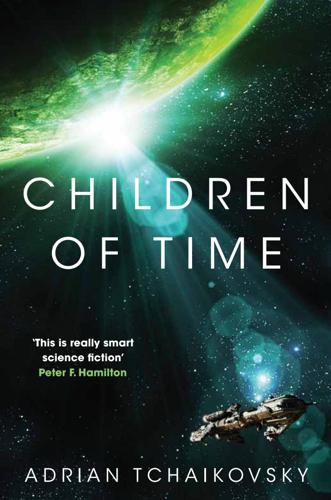
Children of Time
by
Adrian Tchaikovsky
Published 31 May 2015
He is in the engine core because his death will be instant and total and therefore probably painless, Kern surmised. She was already moving, to the surprise of the others. She was heading up, climbing into the access shaft that led to the slender central pylon of the station, heading away from the outer floor that remained ‘down’ only so long as she was close to it; climbing up out of that spurious gravity well towards the long needle they all revolved around. There was a flurry of increasingly concerned messages. Voices called out at her heels. Some of them would follow her, she knew. Sering was continuing blithely: ‘This is not even the beginning, Doctor Kern.’ His tone was relentlessly deferential even in rebellion.
…
Guyen clapped his hands, perhaps annoyed that he had not been listening to his own voice for two minutes at a stretch. ‘You each have your tasks, so go and make ready. Vitas, run checks on our instrumentation, as you proposed. I want us to conduct a full inspection of the planet and satellite as we close. Lain, keep a close eye on ship’s systems as we approach the star’s gravity well – the Gil’s not done anything but go in a straight line for a long time. Karst, get your people reacquainted with their kit, just in case we need you. Mason, you’re working with my people on monitoring that signal. If there’s anything active there to respond to us, I want to know about it.’ Hours later, and Holsten was almost the last person left in the Communications suite, his dogged academic patience having outlasted most of Guyen’s people.
…
He was not sure what they would get back, and he was ready to shut down the comms if it was just that anguished mad babbling, because there could be no dialogue with that – no possibility of negotiating with that internalized storm of insanity. ‘We’re being told to stand by,’ he reported, when the instruction came. After that there was nothing else for a long time; the Gilgamesh continued to fall inexorably towards the green planet’s gravity well. The satellite was still silent when Lain and her team began their anxious watch over ship’s systems, as the ancient ark ship began to creak and strain at the unnatural imposition of an external source of mass, large and close enough to claw at the vessel’s structure. Everyone there felt a subtle shifting: for the whole waking portion of the journey, their perception of gravity had come from the ship’s gradual deceleration.

Exponential Organizations: Why New Organizations Are Ten Times Better, Faster, and Cheaper Than Yours (And What to Do About It)
by
Salim Ismail
and
Yuri van Geest
Published 17 Oct 2014
Harvard professor Rosabeth Moss Kanter puts it best: “When dealing with a rapidly changing environment and the fluid boundaries of business units that come and go, more work will be done by crosscutting project teams, and there will be more bottom-up self-organizing.” Why Important? Dependencies or Prerequisites • Increased agility • More accountability at customer face • Faster reaction and learning times • Better morale • MTP (as a gravity well) • Self-starting employees • Dashboards Social Technologies Social technology is an overused industry buzz phrase that has been giving CIOs heartburn for the last decade. Regardless, however, it has had the effect of pushing old analog business environments to become more digital, low-latency environments.
…
A final word on managing fast-tracked growth comes again from Chip Conley, who created the Joie de Vivre chain of specialty hotels and is now part of Airbnb’s senior management team. Conley found that the more information-based we become, the greater the need to rely on rituals and meaning to stabilize companies and keep teams motivated. Thus, as ExOs take on larger numbers of employees, individual tasks and functions increasingly need the gravity well of an MTP to provide purpose. Although that would seem to add to the burden of bigger companies trying to become ExOs, the fact that established companies are better at those rituals, stories and legends—the glue that holds organizations together—works to their advantage, especially when they are accelerating exponentially.
…
Instead, they should migrate towards a Massive Transformative Purpose. As we mentioned earlier, we predict brands will find and merge with aspirational MTPs that will steer them towards providing real value to society—in other words, to a triple bottom line. In order to inspire their teams, attract new top talent and create gravity wells for their communities, big companies should do the same and formulate their own, unique MTPs. This will not only establish the right image—based on reality—for the company’s stakeholders, especially among younger workers within the organization, but it will also serve as a guiding principle when key decisions need to be made.

To Sleep in a Sea of Stars
by
Christopher Paolini
Published 14 Sep 2020
The engine looked no different from any of the rockets she was familiar with (Newton’s third law didn’t care whether you were human or xeno). However, unless the aliens had launched from somewhere extremely close, they had to have a Markov Drive as well. She wondered how they could have snuck up on the Extenuating Circumstances. Could they jump right into a gravity well? Not even the League’s most powerful ships could manage that particular trick. The strange, aching pull Kira still felt seemed to originate from the alien vessel. Part of her wished she could follow it and see what happened, but that was the crazy part of her, and she ignored it. She could also feel the orphaned piece of the xeno, distant and fading as it receded into space.
…
Her joints ached, and her arms and legs throbbed from a dozen bumps and bruises. The xeno protected her from worse, but it seemed to ignore small, chronic discomforts. Kira didn’t know how the people on Shin-Zar or other high-g planets bore it. They were gene-hacked to help them survive and even thrive within a deep gravity well, but still, she had a hard time imagining how they could ever really be comfortable. “Warning,” said Ando. “Zero-g in T-minus five minutes.” Kira disposed of the drink pouch and then gathered a half-dozen thermal blankets from the shuttle’s lockers and brought them with her back to the cockpit.
…
“No one knows if they are the same species, a close relation, or something else entirely, but the Jellies come in different flavors.” Speaking past the food in his mouth, Trig said, “Some have tentacles. Some have arms. Some crawl. Some slither. Some only seem to function in zero-g. Others only get deployed in gravity wells. Some appear in both. A half-dozen different kinds have been spotted so far, but there could be lots more. I’ve collected all the reports from the League. If you’re interested, I could—” “Alright, Trig,” said Falconi. “That can wait.” The kid nodded and fell quiet, although he seemed slightly disappointed.
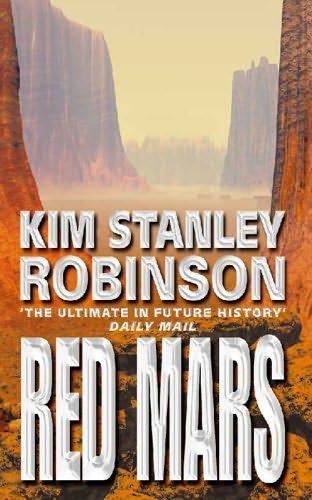
Red Mars
by
Kim Stanley Robinson
Published 23 Oct 1992
It was out of the loop now, a new Azores, nothing but an inconvenience to the cable. And Phyllis had argued all along that Mars itself would have suffered the same fate in the solar system at large, unless the elevator were built to climb its gravity well; they would have been bypassed by miners going to the metal-rich asteroids, which had no gravity wells to contend with. And then there were the moons of Jupiter, Saturn, the outer planets. . . . But there was no danger of that now. • • • On the fifth day they approached Clarke and slowed down. It had been an asteroid about two kilometers across, a carbonaceous hunk now shaped to a cube, with every centimeter of its Mars-facing surface graded and covered with concrete, steel, or glass.
…
But to get something from the (moving) surface of the Earth into orbit around it, requires a minimum v of ten kilometers per second; to leave Earth’s orbit and fly to Mars requires a minimum v of 3.6 kilometers per second; and to orbit Mars and land on it requires a v of about one kilometer per second. The hardest part is leaving Earth behind, for that is by far the deepest gravity well involved. Climbing up that steep curve of spacetime takes tremendous force, shifting the direction of an enormous inertia.History too has an inertia. In the four dimensions of spacetime, particles (or events) have directionality; mathematicians, trying to show this, draw what they call “world lines” on graphs.
…
Security was supposed to be entirely their purview, and they gave out approval for private security pretty routinely; but a hundred people? John instructed Pauline to look into the UNOMA dispatches on the subject, and left for dinner with the Afrikaaners. Again the space elevator was declared a necessity. “They’ll just pass us by if we don’t have it, go straight out to the asteroids and not have any gravity well to worry about, eh?” Despite the five hundred micrograms of omegendorph in his system, John was not in a happy mood. “Tell me,” he said at one point, “do any women work here?” They stared at him like fish. They were even worse than Moslems, really. He left the next day and drove up to Pavonis, intent on looking into the space elevator notion

Old Man's War
by
John Scalzi
Published 2 Jan 2005
"I mean, if you can just pop from one universe to another, why not just do it planet to planet, instead of using spaceships at all? Just skip people directly to a planet surface. It'd save us from getting shot up in space, that's for sure." "The universe prefers to have skipping done away from large gravity wells, like planets and stars," Alan said. "Particularly when skipping to another universe. You can skip very close to a gravity well, which is why we enter new universes near our destinations, but skipping out is much easier the farther away you are from one, which is why we always travel a bit before we skip. There's actually an exponential relationship that I could show you, but—" "Yeah, yeah, I know, I don't have the math," Ed said.
…
The troopship was not equipped for space rescue and was in any event gravely damaged and limping, under fire, toward the closest CDF ship to discharge its surviving passengers. A message to the Dayton itself was likewise fruitless; the Dayton was exchanging fire with several Ohu ships and could not dispatch rescue. Nor could any other ship. In nonbattle situations she was already too small a target, too far down Temperance's gravity well and too close to Temperance's atmosphere for anything but the most heroic retrieval attempts. In a pitched battle situation, she was already dead. And so Maggie, whose SmartBlood was by now reaching its oxygen-carrying limit and whose body was undoubtedly beginning to scream for oxygen, took her Empee, aimed it at the nearest Ohu ship, computed a trajectory, and unloaded rocket after rocket.
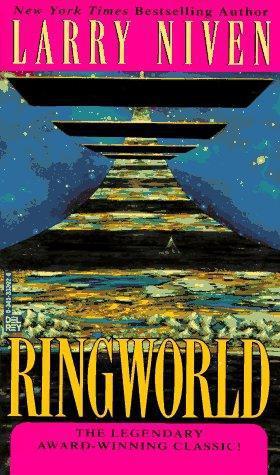
Ringworld
by
Larry Niven
Published 12 Sep 1985
Then the presumed Ringworlders could see at a glance that many kinds of sentient life could deal amicably with each other. Yet too many of these items—the flashlight-lasers, the dueling stunners—could be used as weapons. They took off on reactionless thrusters, to avoid damaging the island. Half an hour later they had left the feeble gravity wells of the puppeteer rosette. It occurred to Louis then that aside from Nessus, whom they had brought with them, and aside from the projected image of the puppeteer Chiron, they had seen not a single puppeteer on the puppeteer world. After they had entered hyperdrive, Lotus spent an hour-and-a-half inspecting every item in the lockers.
…
They had to get off the Ringworld; and they weren’t going to move the Liar by themselves. True barbarians would not be help enough, no matter how numerous or how friendly. “There is one bright aspect to all this,” said Louis Wu. “We don’t have to repair the ship. If we can just get the Liar off the ring, the ring’s rotation will fling it, and us, out of the star’s gravity well. Out to where we can use the hyperdrive.” “But first we must find help.” “Or force help,” said Speaker. “But why do you all just stand here talking?” Teela burst out. She had been waiting silent in the circle, letting the others thrash it out. “We’ve got to get out of here, don’t we? Why not get the flycycles out of the ship?
…
It hurts.” “Fortunately the difficulty does not arise. You have said that I would destroy the Long Shot if I tried to take it. The risk is too great. We will need the puppeteer hyperdrive to escape the wave front from the Core explosion.” “True enough,” said Louis. The kzin would back into the nearest gravity well if he tried to take the Long Shot into hyperdrive. Knowing that, Louis asked, “But suppose I were lying?” “I could not hope to outwit a being of your intelligence.” Sunfire flashed again in Fist-of-God crater. “Think how short a way we came,” said Louis. One hundred and fifty thousand miles in five days, the same distance back in two months.

Scratch Monkey
by
Stross, Charles
Published 1 Jan 2011
Anubis is meant to be building aerominers to blow holes in the cloud layer and shut down the greenhouse, but it's gone to pieces and the whole operation is running on automatic. There are some ships connected with it, drones running out into the near cometary belt and tipping ice cubes down the gravity well. But it's more or less going on all by itself. He won't even let us near the ships." "Yes, but where are we?" "I'm getting to that." Boris didn't like being interrupted. He moved his finger through the dirt, drawing a concentric circle far outside the orbit of Wirth. "There's a gas giant called Turing.
…
It burns with a cold heat, blasting a sleet of hard gamma radiation out into the darkness of space. The hole itself is smaller than a protein molecule, a tiny knot of tortured spacetime that weighs as much as a mountain range. A halo of decaying matter swirls around it, dragged ever inwards by a force of gravity turned in on itself. As it closes in on the sump at the bottom of the gravity well the accretion disk heats up, until atoms split in the incandescent glare of an on-going explosion. A hot spray of high-energy radiation floods off it, hosing across the plane of the gas giant's system of moons. The hole is being used as a synchrotron source, an energy weapon bright enough to shine across interplanetary distances.
…
The Bronstein was a true space ship; not some hyped-up atmospheric shockwave rider, but a freighter capable of going anywhere in the system. It could operate with or without a human crew, having been designed for maintaining the cloud of drone platforms dispersed throughout the Ridgegap system. Decades ago, those platforms had pumped a steady stream of raw materials down into the gravity well of Turing. Some had been assembled into this colony. Others had been diverted in-system to the venusiform world Wirth, their impact showering the clouds of that planet with tailored algae. Days ago Oshi had given the order to have the Bronstein and its sister ships powered up and readied for flight.

Mastering Blockchain, Second Edition
by
Imran Bashir
Published 28 Mar 2018
The core idea behind this algorithm is to develop an adaptive difficulty regulation mechanism that can readjust the difficulty in response to rapid spikes in hash rates. Kimoto Gravity Well (KGW) ensures that the time between blocks remains approximately the same. In Bitcoin, the difficulty is adjusted every 2016 blocks, but in KGW the difficulty is adjusted at every block. This algorithm is vulnerable to time warp attacks, which, allow an attacker to enjoy less difficulty in creating new blocks temporarily. This attack allows a time window where the difficulty becomes low, and the attacker can quickly generate many coins at a fast rate. More information can be found at the link https://cryptofrenzy.wordpress.com/2014/02/09/multipools-vs-gravity-well/. Dark Gravity Wave Dark Gravity Wave (DGW) is a new algorithm designed to address certain flaws such as the time warp attack in the KGW algorithm.
…
PacktPub.com Contributors About the author About the reviewer Packt is searching for authors like you Preface Who this book is for What this book covers To get the most out of this book Download the example code files Download the color images Conventions used Get in touch Reviews Blockchain 101 The growth of blockchain technology Distributed systems The history of blockchain and Bitcoin Electronic cash Blockchain Blockchain defined Peer-to-peer Distributed ledger Cryptographically-secure Append-only Updateable via consensus Generic elements of a blockchain How blockchain works How blockchain accumulates blocks Benefits and limitations of blockchain Tiers of blockchain technology Features of a blockchain Types of blockchain Distributed ledgers Distributed Ledger Technology Public blockchains Private blockchains Semiprivate blockchains Sidechains Permissioned ledger Shared ledger Fully private and proprietary blockchains Tokenized blockchains Tokenless blockchains Consensus Consensus mechanism Types of consensus mechanisms Consensus in blockchain CAP theorem and blockchain Summary Decentralization Decentralization using blockchain Methods of decentralization Disintermediation Contest-driven decentralization Routes to decentralization How to decentralize The decentralization framework example Blockchain and full ecosystem decentralization Storage Communication Computing power and decentralization Smart contracts Decentralized Organizations Decentralized Autonomous Organizations Decentralized Autonomous Corporations Decentralized Autonomous Societies Decentralized Applications (DApps) Requirements of a Decentralized Application Operations of a DApp DApp examples KYC-Chain OpenBazaar Lazooz Platforms for decentralization Ethereum MaidSafe Lisk Summary Symmetric Cryptography Working with the OpenSSL command line Introduction Mathematics Set Group Field A finite field Order An abelian group Prime fields Ring A cyclic group Modular arithmetic Cryptography Confidentiality Integrity Authentication Entity authentication Data origin authentication Non-repudiation Accountability Cryptographic primitives Symmetric cryptography Stream ciphers Block ciphers Block encryption mode Electronic Code Book Cipher Block Chaining Counter mode Keystream generation mode Message authentication mode Cryptographic hash mode Data Encryption Standard Advanced Encryption Standard How AES works Summary Public Key Cryptography Asymmetric cryptography Integer factorization Discrete logarithm Elliptic curves Public and private keys RSA Encryption and decryption using RSA Elliptic Curve Cryptography Mathematics behind ECC Point addition Point doubling Discrete logarithm problem in ECC RSA using OpenSSL RSA public and private key pair Private key Public key Exploring the public key Encryption and decryption Encryption Decryption ECC using OpenSSL ECC private and public key pair Private key Private key generation Hash functions Compression of arbitrary messages into fixed-length digest Easy to compute Preimage resistance Second preimage resistance Collision resistance Message Digest Secure Hash Algorithms Design of Secure Hash Algorithms Design of SHA-256 Design of SHA-3 (Keccak) OpenSSL example of hash functions Message Authentication Codes MACs using block ciphers Hash-based MACs Merkle trees Patricia trees Distributed Hash Tables Digital signatures RSA digital signature algorithm Sign then encrypt Encrypt then sign Elliptic Curve Digital Signature Algorithm How to generate a digital signature using OpenSSL ECDSA using OpenSSL Homomorphic encryption Signcryption Zero-Knowledge Proofs Blind signatures Encoding schemes Financial markets and trading Trading Exchanges Orders and order properties Order management and routing systems Components of a trade The underlying instrument General attributes Economics Sales Counterparty Trade life cycle Order anticipators Market manipulation Summary Introducing Bitcoin Bitcoin Bitcoin definition Bitcoin – a bird's-eye view Sending a payment to someone Digital keys and addresses Private keys in Bitcoin Public keys in Bitcoin Addresses in Bitcoin Base58Check encoding Vanity addresses Multisignature addresses Transactions The transaction life cycle Transaction fee Transaction pools The transaction data structure Metadata Inputs Outputs Verification The script language Commonly used opcodes Types of transactions Coinbase transactions Contracts Transaction verification Transaction malleability Blockchain The structure of a block The structure of a block header The genesis block Mining Tasks of the miners Mining rewards Proof of Work (PoW) The mining algorithm The hash rate Mining systems CPU GPU FPGA ASICs Mining pools Summary Bitcoin Network and Payments The Bitcoin network Wallets Non-deterministic wallets Deterministic wallets Hierarchical Deterministic wallets Brain wallets Paper wallets Hardware wallets Online wallets Mobile wallets Bitcoin payments Innovation in Bitcoin Bitcoin Improvement Proposals (BIPs) Advanced protocols Segregated Witness (SegWit) Bitcoin Cash Bitcoin Unlimited Bitcoin Gold Bitcoin investment and buying and selling bitcoins Summary Bitcoin Clients and APIs Bitcoin installation Types of Bitcoin Core clients Bitcoind Bitcoin-cli Bitcoin-qt Setting up a Bitcoin node Setting up the source code Setting up bitcoin.conf Starting up a node in testnet Starting up a node in regtest Experimenting with Bitcoin-cli Bitcoin programming and the command-line interface Summary Alternative Coins Theoretical foundations Alternatives to Proof of Work Proof of Storage Proof of Stake (PoS) Various stake types Proof of coinage Proof of Deposit (PoD) Proof of Burn Proof of Activity (PoA) Nonoutsourceable puzzles Difficulty adjustment and retargeting algorithms Kimoto Gravity Well Dark Gravity Wave DigiShield MIDAS Bitcoin limitations Privacy and anonymity Mixing protocols Third-party mixing protocols Inherent anonymity Extended protocols on top of Bitcoin Colored coins Counterparty Development of altcoins Consensus algorithms Hashing algorithms Difficulty adjustment algorithms Inter-block time Block rewards Reward halving rate Block size and transaction size Interest rate Coinage Total supply of coins Namecoin Trading Namecoins Obtaining Namecoins Generating Namecoin records Litecoin Primecoin Trading Primecoin Mining guide Zcash Trading Zcash Mining guide Address generation GPU mining Downloading and compiling nheqminer Initial Coin Offerings (ICOs) ERC20 tokens Summary Smart Contracts History Definition Ricardian contracts Smart contract templates Oracles Smart Oracles Deploying smart contracts on a blockchain The DAO Summary Ethereum 101 Introduction The yellow paper Useful mathematical symbols Ethereum blockchain Ethereum – bird's eye view The Ethereum network Mainnet Testnet Private net Components of the Ethereum ecosystem Keys and addresses Accounts Types of accounts Transactions and messages Contract creation transaction Message call transaction Messages Calls Transaction validation and execution The transaction substate State storage in the Ethereum blockchain The world state The account state Transaction receipts Ether cryptocurrency / tokens (ETC and ETH) The Ethereum Virtual Machine (EVM) Execution environment Machine state The iterator function Smart contracts Native contracts Summary Further Ethereum Programming languages Runtime bytecode Opcodes and their meaning Arithmetic operations Logical operations Cryptographic operations Environmental information Block information Stack, memory, storage, and flow operations Push operations Duplication operations Exchange operations Logging operations System operations Blocks and blockchain The genesis block The block validation mechanism Block finalization Block difficulty Gas Fee schedule Forks in the blockchain Nodes and miners The consensus mechanism Ethash CPU mining GPU mining Benchmarking Mining rigs Mining pools Wallets and client software Geth Eth Pyethapp Parity Light clients Installation Eth installation Mist browser Geth The geth console Funding the account with bitcoin Parity installation Creating accounts using the parity command line APIs, tools, and DApps Applications (DApps and DAOs) developed on Ethereum Tools Supporting protocols Whisper Swarm Scalability, security, and other challenges Trading and investment Summary Ethereum Development Environment Test networks Setting up a private net Network ID The genesis file Data directory Flags and their meaning Static nodes Starting up the private network Running Mist on private net Deploying contracts using Mist Block explorer for private net / local Ethereum block explorer Summary Development Tools and Frameworks Languages Compilers Solidity compiler (solc) Installation on Linux Installation on macOS Integrated Development Environments (IDEs) Remix Tools and libraries Node version 7 EthereumJS Ganache MetaMask Truffle Installation Contract development and deployment Writing Testing Solidity language Types Value types Boolean Integers Address Literals Integer literals String literals Hexadecimal literals Enums Function types Internal functions External functions Reference types Arrays Structs Data location Mappings Global variables Control structures Events  Inheritance Libraries Functions Layout of a Solidity source code file Version pragma Import Comments Summary Introducing Web3 Web3 Contract deployment POST requests The HTML and JavaScript frontend Installing web3.js Example Creating a web3 object Checking availability by calling any web3 method Contract functions Development frameworks Truffle Initializing Truffle Interaction with the contract Another example An example project – Proof of Idea Oracles Deployment on decentralized storage using IPFS Installing IPFS Distributed ledgers Summary Hyperledger Projects under Hyperledger Fabric Sawtooth Lake Iroha Burrow Indy Explorer Cello Composer Quilt Hyperledger as a protocol The reference architecture Requirements and design goals of Hyperledger Fabric The modular approach Privacy and confidentiality Scalability Deterministic transactions Identity Auditability Interoperability Portability Rich data queries Fabric Hyperledger Fabric Membership services Blockchain services Consensus services Distributed ledger The peer to peer protocol Ledger storage Chaincode services Components of the fabric Peers Orderer nodes Clients Channels World state database Transactions Membership Service Provider (MSP) Smart contracts Crypto service provider Applications on blockchain Chaincode implementation The application model Consensus in Hyperledger Fabric The transaction life cycle in Hyperledger Fabric Sawtooth Lake PoET Transaction families Consensus in Sawtooth The development environment – Sawtooth Lake Corda Architecture State objects Transactions Consensus Flows Components Nodes The permissioning service Network map service Notary service Oracle service Transactions Vaults CorDapp The development environment – Corda Summary Alternative Blockchains Blockchains Kadena Ripple Transactions Payments related Order related Account and security-related Interledger Application layer Transport layer Interledger layer Ledger layer Stellar Rootstock Sidechain Drivechain Quorum Transaction manager Crypto Enclave QuorumChain Network manager Tezos Storj MaidSafe BigchainDB MultiChain Tendermint Tendermint Core Tendermint Socket Protocol (TMSP) Platforms and frameworks Eris Summary Blockchain – Outside of Currencies Internet of Things Physical object layer Device layer Network layer Management layer Application layer IoT blockchain experiment First node setup Raspberry Pi node setup Installing Node.js Circuit Government Border control Voting Citizen identification (ID cards) Miscellaneous Health Finance Insurance Post-trade settlement Financial crime prevention Media Summary Scalability and Other Challenges Scalability Network plane Consensus plane Storage plane View plane Block size increase Block interval reduction Invertible Bloom Lookup Tables Sharding State channels Private blockchain Proof of Stake Sidechains Subchains Tree chains (trees) Block propagation Bitcoin-NG Plasma Privacy Indistinguishability Obfuscation Homomorphic encryption Zero-Knowledge Proofs State channels Secure multiparty computation Usage of hardware to provide confidentiality CoinJoin Confidential transactions MimbleWimble Security Smart contract security Formal verification and analysis Oyente tool Summary Current Landscape and What's Next Emerging trends Application-specific blockchains (ASBCs) Enterprise-grade blockchains Private blockchains Start-ups Strong research interest Standardization Enhancements Real-world implementations Consortia Answers to technical challenges Convergence Education of blockchain technology Employment Cryptoeconomics Research in cryptography New programming languages Hardware research and development Research in formal methods and security Alternatives to blockchains Interoperability efforts Blockchain as a Service Efforts to reduce electricity consumption Other challenges Regulation Dark side Blockchain research Smart contracts Centralization issues Limitations in cryptographic functions Consensus algorithms Scalability Code obfuscation Notable projects Zcash on Ethereum CollCo Cello Qtum Bitcoin-NG Solidus Hawk Town-Crier SETLCoin TEEChan Falcon Bletchley Casper Miscellaneous tools Solidity extension for Microsoft Visual Studio MetaMask Stratis Embark DAPPLE Meteor uPort INFURA Convergence with other industries Future Summary Another Book You May Enjoy Leave a review – let other readers know what you think Preface This book has one goal, to introduce theoretical and practical aspects of the blockchain technology.
…
All these algorithms are based on the idea of readjusting various parameters in response to hash rate changes; these parameters include the number of previous blocks, the difficulty of previous blocks, the ratio of adjustment, and the number by which the difficulty can be readjusted back or up. In the following section, readers will be introduced to the few difficulty algorithms being used in and proposed for various altcoins. Kimoto Gravity Well This algorithm is used in various altcoins to regulate difficulty. This method was first introduced in Megacoin and used to adjust the difficulty of the network every block adaptively. The logic of the algorithm is shown as follows: KGW = 1 + (0.7084 * pow((double(PastBlocksMass)/double(144)), -1.228)) The algorithm runs in a loop that goes through a set of predetermined blocks (PastBlockMass) and calculates a new readjustment value.
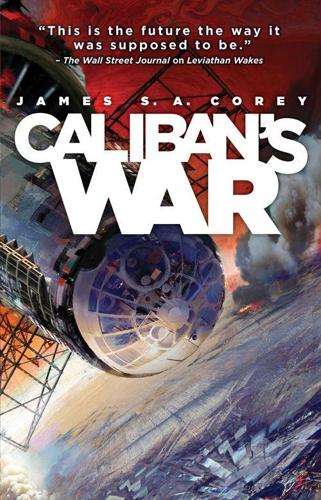
Caliban's War
by
James S. A. Corey
Published 6 Jun 2012
We play for the long term, and that means looking strong for the duration. Errinwright knows that. It’s why he played it this way.” Outside, another shuttle was lifting off. Avasarala could already hear the roar of the burn, feel the press of thrust and false gravity pushing her back. It had been thirty years since she’d been out of Earth’s gravity well. This wasn’t going to be pleasant. “If you get on that ship, they’ll kill you,” Bobbie said, making each word its own sentence. “That’s not how this game gets played,” Avasarala said. “What they—” The door opened again. Soren had a tray in his hands. The teapot on it was cast iron, with a single handleless enamel cup.
…
In that sense, he was much better off than he had been before. On the other hand, he had been searching Ganymede. Now the field had expanded to include everywhere. The lag time to Earth—or Luna, actually, since Persis-Strokes Security Consultants was based in orbit rather than down the planet’s gravity well—was a little over twenty minutes. It made actual conversation essentially impossible, so in practice, the hatchet-faced woman on his screen was making a series of promotional videos more and more specifically targeted to what Prax wanted to hear. “We have an intelligence-sharing relationship with Pinkwater, which is presently the security company with the largest physical and operational presence in the outer planets,” she said.
…
She stopped the recording, cut off the last few seconds of her looking into the camera in despair, and sent it off with every high-priority flag there was and diplomatic encryption. So this was what it came to. All of human civilization, everything it had managed, from the first cave painting to crawling up the gravity well and pressing out into the antechamber of the stars, came down to whether a man whose greatest claim to fame was that he’d been thrown in prison for writing bad poetry had the balls to back down Errinwright. The ship corrected under her, shifting like an elevator suddenly slipping its tracks. She tried to sit up, but the gimbaled couch moved.

The Terraformers
by
Annalee Newitz
Invasive species fleeing the damage, coupled with toxic topsoil runoff, had wrecked the balance in the marshes. Verdance had forced their pet ERT to fix its own environmental disaster. “It’s going to be like that all the time now, isn’t it? Ronnie is basically saying these potential buyers will be coming down the gravity well and doing whatever they want. Killing trees, leaving waste, eating the small animals that our predators need.” “Yeah, I definitely sense more crocodile apocalypses in our future.” Eyes prickling, Destry leaned against Nil. “I wish we could just fix this watershed and get a gold star on our ERT reports.
…
Lungs dominated the biggest and most urbanized of the Bronze Islands, known currently as BI-2. BI-1 and BI-3 through 5 were reserved for ecotourism, so their development was minimal. Halfway between the Bronze Islands and Lefthand was the planet’s main port, crowded with the shuttles that took people up and down the gravity well. Garishly painted in every color, emblazoned with glittering travel brands, the shuttles were a tropical bouquet erupting from the water. Under magnification, they resolved into swollen metal tubes and saucers, swarmed by hominins and a few other people waiting for ferries to take them to the islands or mainland.
…
Official reports said Emerald was claiming temporary sovereignty over the spaceport, requesting that all incoming vessels remain in orbit or off-load their passengers into an Emerald space habitat. Emerald would offer discounted housing and food tickets for travelers while they waited to slide down the gravity well. The corporation had effectively shut down all planetary access. Other companies, including Verdance’s parent corporation, were already filing lawsuits. They argued that Emerald’s move was a violation of everyone else’s property rights—essentially, it was a blockade. As far as Moose could tell, nobody offworld was investigating why Emerald wanted to take control of the port.

The Dream of the Iron Dragon
by
Robert Kroese
Published 6 Dec 2017
“To be clear,” Slater said, “you’re arguing that this is probably a Cho-ta’an trap… and that we should check it out anyway?” “Precisely,” said Stauffer. “The potential upside outweighs the overwhelming likelihood that we are going to die.” Chapter Two It took fifteen days for Andrea Luhman to reach the planet’s gravity well, the first three of which were spent at three gee acceleration. Several hours after Andrea Luhman changed course, the signal abruptly stopped transmitting, and at first Mallick thought the senders had changed their mind about their invitation. But then it started up again, two hours and thirty-eight minutes later.
…
“You’re thinking about using the Sol gate? Is it even active?” “Sure,” Mallick replied. “They still send probes through once in a while to monitor the system. But for all practical purposes, it’s clear. And it’s farther out in the system than most of the other gates, so we’re less likely to get pulled into a gravity well.” “Could work,” Carpenter said. “We try to lose the Cho-ta’an in the Sol system, ricochet around the sun and head back through the gate to Geneva. Hopefully at a less insane velocity.” “Exactly. It also gives the IDL some time to clear us a path, if we can give them a definite velocity.” “I like it,” Carpenter said.
…
Chapter Ten Thea Jane Slater sank into her chair as the lander’s thrusters fired. In the past few seconds, her weight had gone from zero to four times her ordinary weight: the lander was pulling over four gees. It was an unpleasant way to travel, but if the lander didn’t slow below fifty thousand kilometers per hour, it was going to cruise right through Earth’s gravity well and continue into deep space. If the lander came in too fast, it wouldn’t get a second chance: it would run out of fuel before it could reverse course. Carpenter had done the math and assured them they’d be fine. It didn’t feel fine, though. To Slater it felt like her skull was going to collapse from the pressure.

A Half-Built Garden
by
Ruthanna Emrys
Published 25 Jul 2022
A thousand years of anticipation lay behind this mission, the first beyond their home system with even a chance of succeeding. The Second Reach—maybe. Failure would mean a greater loss than all four Fallen Worlds put together. To arrive too late deserved mourning. To reach out, only to watch a world refuse your grasp and plummet into their gravity well … And how many people had considered what would happen if they did succeed? There had been two Rings, two symbiotic species, since the plains-folk first touched their neighboring world. A third would change everything—the morning ritual the least of it. Cytosine doubtless imagined new scientific insights as humans explored the Rings’ technology and reflected it back transformed.
…
Associate Kelsey is playing obre; you can tell by the slick suit, and how his tiara has real rubies in exactly the way my necklace does not.” I wanted to get closer to Cytosine—and so did the clamoring contributors to my open thread. But I could already see how the associates had arranged the night, if not to completely prevent that, then at the very least to give others priority. Leave that gravity well until later, suggested Rhamnetin. Talk to other people outside the conversation, find out what they think. New to the network he might be, but Carol had started him with appropriately high weight on all matters pertaining to Ringers. Even if the upvotes hadn’t risen quickly, I’d’ve seen the sense.
…
Whatever decision Cytosine was going to reach, she hadn’t made it yet, and there was nothing more for us to do just then. So we turned back to the window-screen, and watched Earth shrink to a pinprick. CHAPTER 38 It was a short trip. As short as the shuttle flight to Zealand—Rhamnetin explained that they could only use the tunnel drive a certain distance from nearby gravity wells, so most of the trip was spent getting to that distance. The movement between star systems took almost no time at all. It was the longest I’d been on the Solar Flare without either a specific goal or being too exhausted to think. I watched the foliage shift around our explorations, blooming interfaces and screens for Rhamnetin, and I started to get a sense of how it was its own sort of network.
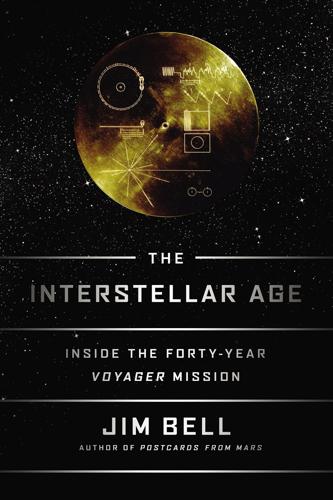
The Interstellar Age: Inside the Forty-Year Voyager Mission
by
Jim Bell
Published 24 Feb 2015
The first half, or inbound, part of Voyager 2’s flyby past Saturn was as routine as flying a tight trajectory past a gas giant planet can ever be, and made it possible to capture more of Andy Ingersoll’s giant planet atmosphere movies (covering Saturn’s northern hemisphere), and distant flybys of Titan and the icy moons Mimas, Dione, and Rhea—all of which had been photographed at higher resolution by Voyager 1. It was then that things got . . . interesting. As the spacecraft fell deeper into Saturn’s gravity well and started to speed up (Voyager 2 was eventually accelerated from 36,000 miles per hour to nearly 54,000 miles per hour by flying a gravity-assist trajectory behind Saturn) and get closer to the planet and the rings, the kinds of maneuvers that the sequencing team had to build into the instrument observations became more and more complex.
…
Rather, the reality of these new worlds came into view slowly, over many weeks, with a grace and air of anticipation that more accurately reflected the gentle gravity assist that we were all actually going through, riding along with the spacecraft. During those last ten hours, though, as Voyager plunged deeper into the gravity well of the seventh planet, we all experienced plenty of breathtaking moments. One by one the five large icy moons were revealed to us from Voyager’s high-resolution images, and a total of ten new, smaller moons would eventually be discovered lurking in the images. All the large moons are heavily cratered, attesting to their generally ancient ages.
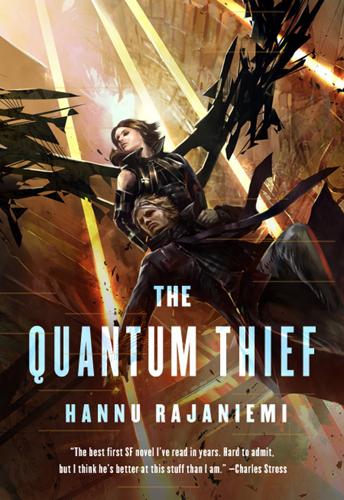
The Quantum Thief
by
Hannu Rajaniemi
Published 1 Jan 2010
‘Whatever it was that you did,’ Perhonen says, ‘looks like they want you back.’ 2 THE THIEF AND THE ARCHONS What did I do? Mieli’s heart pounds as the pilot’s crèche embraces her. Something went wrong in the Prison. But it was just like the sims. Why are they after us? She summons the combat autism the pellegrini built into her. It enfolds her like a cool blanket, turns the world into vectors and gravity wells. Her mind enmeshes with Perhonen’s, thinking fast thoughts. Objects: Perhonen. Scattered Trojan asteroids, clustered around 2006RJ103, a two-hundred k nugget of rock, inhabited by slow-brained synthlife. The Prison, a diamond doughnut thirty lightseconds behind them, the origin of Perhonen’s current vector, dense, dark and cold.
…
Calmly, she ejects it, watches it drift away, still mutating and shifting in slow motion like a malignant tumour, forming strange organs that fire molecule-sized spores at Perhonen’s firewall until she burns it with the anti-meteorite lasers. ‘That hurt,’ Perhonen says. ‘I’m afraid that this will hurt a lot more.’ She burns all the delta-v in their emergency antimatter in one burst, swinging the ship into the shallow gravity well of 2006RJ103. Perhonen’s flesh groans as the antiprotons from the magnetic storage ring turn into hot jets of plasma. She diverts some of the power to pumping up the binding energies of the programmable matter rods in the hull. The Archons follow without effort, approaching, firing again. Perhonen screams around Mieli, but the autism keeps her mind on the task at hand.
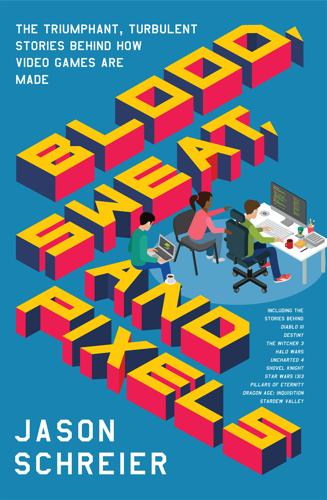
Blood, Sweat, and Pixels: The Triumphant, Turbulent Stories Behind How Video Games Are Made
by
Jason Schreier
Published 4 Sep 2017
Unrecoverably, literally deleted. If I hadn’t had a copy on my laptop, it would’ve been gone forever. With no warning, no discussion, no nothing.” Heightening the stress for Griesemer was the fact that with every reboot, Destiny seemed to get closer and closer to Halo, as if Bungie’s iconic series was a gravity well that the studio just couldn’t escape. Once Halo 3: ODST shipped, that team moved to Destiny. Once Halo: Reach shipped, that team moved to Destiny. Soon they had hundreds of people working on their next big game, which forced Bungie into making quick decisions just so they’d all have stuff to do (they, like Naughty Dog once Bruce Straley and Neil Druckmann took over Uncharted 4, had to “feed the beast”).
…
Bungie’s schedule would have a very strict cadence. Activision expected the studio to release Destiny 1 in the fall of 2013, with an expansion called Comet following a year later. The next year would be Destiny 2, then Comet 2, and so on. Jaime Griesemer began to realize that, as hard as he had tried to resist the Halo gravity well, they’d all been sucked in. Worse, he realized that most of the studio was just fine with that. “When I joined Bungie, there were eight guys working on Halo,” Griesemer said. “When we shipped Halo 1 [in 2001] it was maybe fifty guys. By the time Reach and ODST had joined the Destiny team, we were probably three hundred people.

The Year's Best Science Fiction: Twenty-Sixth Annual Collection
by
Gardner Dozois
Published 23 Jun 2009
It wasn’t, after all, as if she was going anywhere. Black Alice was on duty when the Lavinia Whateley spotted prey; she felt the shiver of anticipation that ran through the decks of the ship. It was an odd sensation, a tic Vinnie only exhibited in pursuit. And then they were underway, zooming down the slope of the gravity well toward Sol, and the screens all around Engineering—which Captain Song kept dark, most of the time, on the theory that swabs and deckhands and coalshovelers didn’t need to know where they were, or what they were doing—flickered bright and live. Everybody looked up, and Demijack shouted, “There!
…
James Alan Gardner has made many fiction sales to The Magazine of Fantasy & Science Fiction, Asimov’s Science Fiction, Amazing, Tesseracts, On Spec, Northern Stars, and other markets. His books include the SF novels Expendable, Commitment Hour, Vigilant, Hunted, Ascending, and Trapped. His most recent novel is Radiant. His short fiction has been collected in Gravity Wells: Speculative Fiction Stories. This is a story about a ray-gun. The ray-gun will not be explained except to say, “It shoots rays.” They are dangerous rays. If they hit you in the arm, it withers. If they hit you in the face, you go blind. If they hit you in the heart, you die. These things must be true, or else it would not be a ray-gun.
…
So he spent hours and years immersed in the great annual eisteddfod of the Barrant-Hoj, where one of the early generation of seed-ships (early in that it was seed of the seed of the seed of the first flowering of mythical Earth) had been drawn into the embrace of a fat, slow hydrocarbon-rich gas giant and birthed a brilliant, brittle airborne culture, where blimp-cities rode the edge of storms wide enough to drown whole planets and the songs of the contestants—gas-bag-spider creatures huge as reefs, fragile as honeycomb—belled in infrasonic wavefronts kilometers between crests and changed entire climates. It took Barrant-Hoj two hominiform lifetimes to circle its sun—the Anpreen had chanced upon the song-spiel, preserved it, hauled it out of the prison of gas giant’s gravity well, and given it to greater Clade. Jedden blinked back into interstellar flight. He felt—he imagined—tears on his face as the harmonies reverberated within him. Cantos could last days, chorales entire weeks. Lost in music. A moment of revulsion at his body, this sharp, unyielding thing of ice and energies.
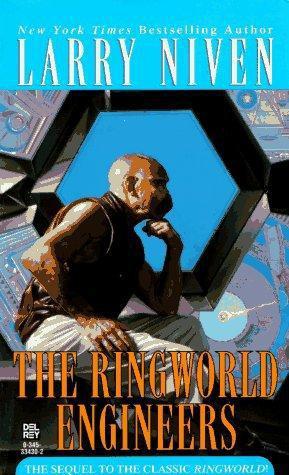
The Ringworld engineers
by
Larry Niven
Published 12 Nov 1985
Some might have ancestors here, alive in frozen time in the domes buried beneath this lava island. One day they’d have to be dug up ... There were so many things he hadn’t done on Canyon, because the wire was always calling. Men and kzinti had climbed those sheer cliffs for sport, in the low gravity. Well, he would have one last chance to try that. It was one of his three routes out. The second was the elevators; the third, a transfer booth to the Lichen Gardens. He’d never seen them. Then overland in a pressure suit light enough to fold into a large briefcase. On the surface of Canyon there were mines, and there was a large, indifferently tended preserve for the surviving varieties of Canyon lichen.
…
The Hindmost had last used this beam as a spotlight. At close range it was devastating. The floating building became a streamer of incandescence with a cometlike head of boiling concrete. Then it was only dust cloud. Louis said, “Dive.” “Louis?” “We’re a target here. We don’t have time. Dive. Twenty gravities. We’ll make our own door.” The ocher landscape was a roof over their heads. Deep-radar showed a hole in the scrith, dropping to engulf them. But every other sense showed the solid lava crater in Mons Olympus descending at terrible speed to smash them. Kawaresksenjajok’s nails in Louis’s arm were drawing blood.
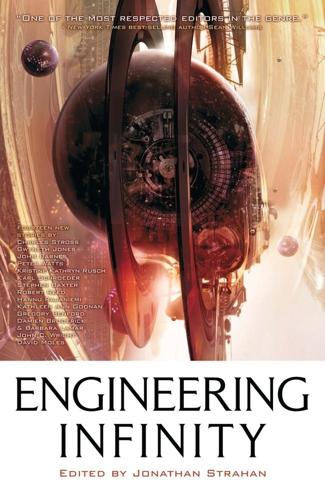
Engineering Infinity
by
Jonathan Strahan
Published 28 Dec 2010
They're not flare stars, and while normally this is a good thing, it makes it distinctly difficult to make observations of the atmosphere and surface features of 1061 Able through Mike by reflected light; the primaries are so dim that even though our long baseline interferometer can resolve hundred-kilometre features on the inner planets back in Sol system, we can barely make out the continents on Echo One and Echo Two. Now, those continents are interesting things, even though we're not going to visit down the gravity well any time soon. We know they're there, thanks to the fast flyby report, but we won't be able to start an actual survey with our own eyes until well into the deceleration stage, when I'll be unpacking the -" I feel a sudden jolt through the floor of the tank. Lorus's voice breaks up in a stuttering hash of dropouts.
…
Others, already close to Babylon's escape velocity and by the neutron star's orbital motion close to escaping from it as well, are shunted aside, forced into hyperbolic orbits that banish them from the battlefield as surely as death. But the ring's defenders are fighting from the bottom of a deep gravity well, with limited resources, nearly all the mass they've assembled here incorporated into the ring itself; and the Babylonians have their own store of ancient cunning to draw on, their aggregate population a hundred times larger than the Community's, more closely knit and more warlike. And they have Ninurta.
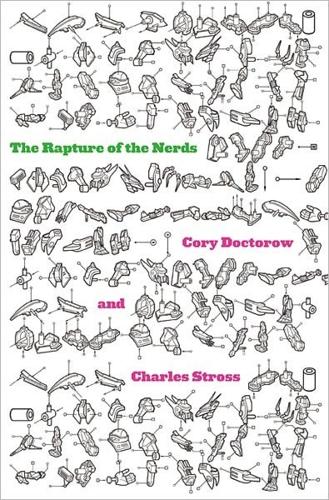
The Rapture of the Nerds
by
Cory Doctorow
and
Charles Stross
Published 3 Sep 2012
Soon, he’ll get to say what he thinks about some item of new technology—and they’ll have to listen to him. * * * Welcome to the fractured future, the first century following the singularity. Earth has a population of roughly a billion hominids. For the most part, they are happy with their lot, living in a preserve at the bottom of a gravity well. Those who are unhappy have emigrated, joining one or another of the swarming densethinker clades that fog the inner solar system with a dust of molecular machinery so thick that it obscures the sun. Except for the solitary lighthouse beam that perpetually tracks the Earth in its orbit, the system from outside resembles a spherical fogbank radiating in the infrared spectrum; a matryoshka brain, nested Dyson spheres built from the dismantled bones of moons and planets.
…
Oh, how they’d fiddled, pestering him with questions about what he wanted his new body to be like, which upgrades and mods it should have, trying to tempt him with talented penises and none-too-subtle surrogates, such as retractable unobtanium claws and bones infused with miracle fiber and carbon nanotubes. He’d waved them off, refusing even to take in all the wonders on offer: no, no, no, just give me back my actual, physical body, the body I would have had if none of this had taken place, if I had been a man who was born to a woman, grown to maturity in the gravity well of my ancestors. Once he’d gotten through to them, they’d complied with a vengeance, and now Huw heaved himself out of bed every morning with the aches and pains of baseline humanity on throbbing, glorious display. He showered himself, noting the soap’s slither over every ingrowing hair, every wrinkle, every flabby nonessential extruding from his person.

A New History of the Future in 100 Objects: A Fiction
by
Adrian Hon
Published 5 Oct 2020
Two members of the Group of Five shuttled up to the station to personally oversee the installation of their spectacular Orrery chandelier in the museum, along with the detailed fractal layering that enveloped the rest of the station. While the consortium’s decision struck most observers as being dangerously optimistic, it’s worth bearing in mind that the semi-permanent orbital population was now well over five thousand and growing rapidly. Compared to the expense of shuttling up and down Earth’s steep gravity well, the amount of energy required for interstation transit was negligible, as was the cost of the vehicles, which didn’t ever need to enter the atmosphere. The consortium bet correctly. The natural human desire for company and exploration saw Alto Firenze defy its critics and flourish as a popular meeting place, hosting zero-G exhibitions and artworks and numerous orbital conferences and committee meetings in the late ’30s and early ’40s.
…
But I cannot remember what it is to dream. 82 THE CASCADE Low Earth Orbit, 2052 They were a century late, but the gleaming dreams of the 1950s and ’60s finally came true. By 2050, space travel was at that delicate moment between adventure and commonplace, a moment when tens of thousands lived and worked in orbit, and millions traveled up and down the gravity well in spaceplanes, laser launchers, and vertical take-off and landing (VTOL) rockets. “Orbit” didn’t simply describe a path around Earth; it had become a place that provided unparalleled freedom and immunity. If you were rich or smart or valuable enough, you could earn yourself a spot on the frontier—but unlike the old American frontier, orbit had all the comforts of home with none of the downsides.
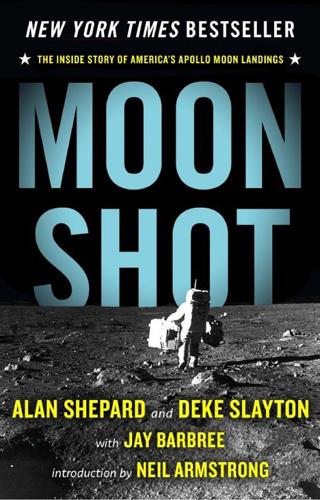
Moon Shot: The Inside Story of America's Apollo Moon Landings
by
Jay Barbree
,
Howard Benedict
,
Alan Shepard
,
Deke Slayton
and
Neil Armstrong
Published 1 Jan 1994
Apollo rolled, and the home of man slid eerily, silently, out of sight. Tomorrow would be Christmas Eve. That Borman and his crew were here seemed impossible. They had left earth atop America’s largest rocket. The mightiest energy machine ever built to lift straight up and away from the deep gravitational well of the planet. A monster of steel and ice and fire atop which no man had ever before flown—and they were risking everything to fly to the moon. It was a gamble like few others known in history. The mighty rocket, the Saturn V, had flown only twice before. Unmanned. First successfully, second with some failures.

How to Hide an Empire: A History of the Greater United States
by
Daniel Immerwahr
Published 19 Feb 2019
* * * In 1969 the United States achieved what was probably its most technically difficult goal since the Second World War: the moon landing. The most powerful rocket engines in history had to blast the spacecraft into the sky, where the whole thing would progressively dismantle itself mid-flight, shooting a smaller module safely into the lunar gravity well. There is a reason that “rocket science” became the proverbial way to refer to the hardest intellectual challenges out there. Yet it wasn’t all jets and orbits. The moon landing was a triumph of chemical engineering, too. NASA needed light materials that could endure extreme temperatures and micrometeoroid strikes, yet keep pressurized air in.
…
All this turned the United States into the undisputed standard-setter for the Allies. The war had united their economies, but Washington set the terms of the union. You could see this in Australia. As a British dominion, Australia had adhered to British standards before the war, with some local variations. Yet it didn’t take long for it to tip into the gravity well of the United States’ war economy. The key period was from 1942 to 1944, after Douglas MacArthur abandoned the Philippines but before the United States could fully provision his troops via the mainland. MacArthur still relied on the United States for ships and weapons, but for high-volume, low-value items such as food and clothing, Australia became the source.
…
But resistance to the language was strong enough that he earnestly considered the possibility that the artificial language of Esperanto, which was easier to learn and had little of English’s cultural baggage, might prevail. Betamax, in other words, was still an option. Yet the period of choice lasted only so long, and 1969 was pretty near to the end. The following decades saw country after country succumbing to English. Even as they tried to escape from it, they fell into its growing gravity well. India had, at its independence, temporarily allowed English to remain a “subsidiary official” language, with the understanding that the government would switch entirely to Hindi in 1965. But not only did English persist, it grew. Today, advertisements are in English, higher education is in English, and Bollywood movies feature generous helpings of English.

Wireless
by
Charles Stross
Published 7 Jul 2009
ELITE A Brief Alternate History of the Solar System: Part One What has already happened: SLIDE 1. Our solar system, as an embryo. A vast disk of gas and infalling dust surrounds and obscures a newborn star, little more than a thickening knot of rapidly spinning matter that is rapidly sucking more mass down into its ever-steepening gravity well. The sun is glowing red-hot already with the heat liberated by its gravitational collapse, until . . . SLIDE 2. Ignition! The pressure and temperature at the core of the embryo star has risen so high that hydrogen nuclei floating in a degenerate soup of electrons are bumping close to one another.
…
Out beyond the dew line, where ice particles can grow, a roiling knot of dirty ice is forming, and like the sun before it, it greedily sucks down dirt and gas and grows. As it plows through the cloud, it sprays dust outward. Meanwhile, at the balancing point between the star and the embryonic Jovian gravity well, other knots of dust are forming . . . SLIDE 4. A billion years have passed since the sun ignited, and the stellar nursery of gas and dust has been swept clean by a fleet of new-formed planets. There has been some bickering—in the late heavy bombardment triggered by the outward migration of Neptune, entire planetary surfaces were re-formed—but now the system has settled into long-term stability.
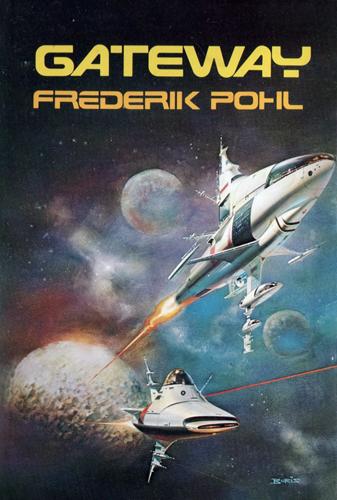
Gateway
by
Frederik Pohl
Published 15 Dec 1977
He dwelt on the old stars that gave birth to us all, spitting silicates and magnesium carbonate into space to form our planets, hydrocarbons to form ourselves. He talked about the neutron stars that bent the gravity well around them; we knew about them, because two launches had killed themselves, sheared into rubble, by entering normal space too close to one of those hyper-dense dwarfs. He told us about the black holes that were the places where a dense star had been, now detectable only by the observable fact that they swallowed everything nearby, even light; they had not merely bent the gravity well, they had wrapped it around themselves like a blanket. He described stars as thin as air, immense clouds of glowing gas; told us about the prestars of the Orion Nebula, just now blossoming into loose knots of warm gas that might in a million years be suns.

The Future Is Faster Than You Think: How Converging Technologies Are Transforming Business, Industries, and Our Lives
by
Peter H. Diamandis
and
Steven Kotler
Published 28 Jan 2020
So yeah, get ready player one—there are federal judges diving your way. 3-D Printing The most expensive supply chain in the universe extends only 241 miles. It’s the resupply network running from Mission Control down here on Earth straight up to the astronauts aboard the International Space Station (or ISS). The expense comes from weight. It costs $10,000 per pound to get an object out of the Earth’s gravity well. And because it can take months to actually reach the Space Station, a significant portion of ISS’s precious real estate is taken up by the storage of replacement parts. In other words, the most expensive supply chain in history leads to the most exotic junkyard in the cosmos. In BOLD, we told the story of Made In Space, the first company trying to solve these problems.
…
Learn more about the Hololens here: https://www.microsoft.com/en-us/hololens. 3-D Printing The most expensive supply chain in the universe extends only 241 miles: Remy Melina, “International Space Station: By the Numbers,” Space.com, August 4, 2017. See: https://www.space.com/8876-international-space-station-numbers.html. It costs $10,000 per pound to get an object out of the Earth’s gravity well: “Advanced Space Transportation Program: Paving the Highway to Space,” National Aeronautics and Space Administration (NASA), April 12, 2018. See: https://www.nasa.gov/centers/marshall/news/background/facts/astp.html. See also: Robert Dempsey, “The International Space Station Operating an Outpost in the New Frontier,” National Aeronautics and Space Administration (NASA), April 13, 2018, https://www.nasa.gov/sites/default/files/atoms/files/iss-operating_an_outpost-tagged.pdf.
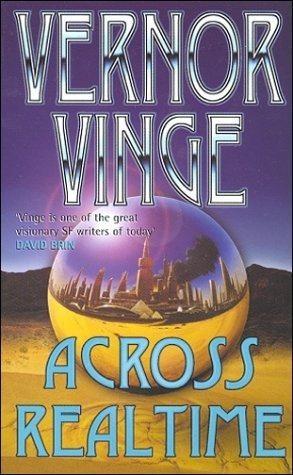
Across Realtime
by
Vernor Vinge
Published 1 Jan 1986
With virtually no fuel left, it would be a matter of luck whether contact finally occurred. The reddish disk of the destination planet swam placidly along while the mock spacecraft arced higher and higher, slower and slower, their paths becoming almost tangent. The craft was accelerating now, falling into the gravity well of the destination, giving the tantalizing impression of success that always comes with a close shot. Closer and closer. And the two lights became one on the board. "Intercept," the display announced, and the stats streamed across the lower part of the screen. Rosas and Nais-mith looked at each other.
…
I know how people your, uh, age feel about children, but-" The old man shook his head, caught Mike with a quick glance that was neither abstracted nor feeble. "You know they've been after me to take on an apprentice for years, Sy. Well, I've decided. Besides trying to kill Mike, he played Celest like a master. The gravity-well maneuver is one I've never seen discovered unaided." "Mike told me. It's slick, but I see a lot of players do it. We almost all use it. Is it really that clever?" "Depending on your background, it's more than clever. Isaac Newton didn't do a lot more when he deduced elliptical orbits from the inverse square law."
…
I averaged less than a twentieth light speed. But that was fast enough. I had time to visit the Large Magellanic Cloud and the Fornax System, besides our own galaxy. I had time to stop at tens of thousands of places, at astrophysical freaks and normal stars. I saw some strange things, mostly near deep gravity wells. Maybe it was engineering, but I couldn't prove it, even to myself. "I found that most slow-spinning stars have planets. About ten percent of these have an Earth-type planet. And almost all such planets have life. "If Monica Raines loves the purity of life without intelligence, she loves one of the most common things in the universe....
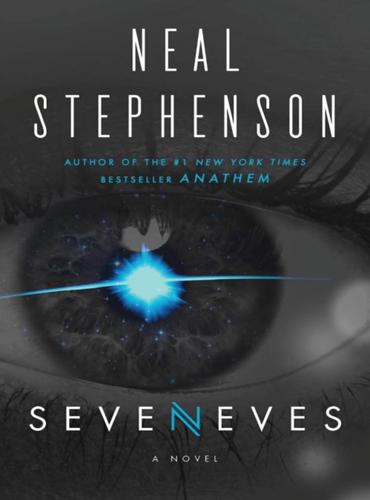
Seveneves
by
Neal Stephenson
Published 19 May 2015
And that was a primitive beast, but it had a basically infinite supply of energy in the nuclear reactor, and a vast stock of propellant in the form of ice. The “steampunk” propulsion system had much lower efficiency, however, than a properly engineered rocket motor. Consequently, the mass ratio that would be needed to slow Ymir down from the high-speed elliptical orbit with which it was falling into Earth’s gravity well, to match the much slower, circular orbit of Izzy, was about thirty-four, which meant that 97 percent of the ice currently attached to Ymir was going to be melted, turned into steam, and jetted out its makeshift nozzle just to slow it down. The remaining 3 percent, however, would still weigh as much as Izzy and Amalthea put together.
…
To compensate for the losses, they had jury-rigged all the other engines they could get: the big one from the Caboose, all the propulsion units that had once been part of the Shipyard, and a few spare motors from straggler arklets that had become separated from the Swarm and found a way to rejoin them. Despite the reduction in engine power, Endurance was at least as maneuverable now as she had been at the beginning, when she had wallowed at the bottom of Earth’s gravity well, burdened with years’ worth of propellant. She weighed half as much now as she had in those days. The burn went on for a while. It concluded with a change in attitude and a burn in another direction. Doob didn’t have to read the numbers on the screen to know what they were doing. They’d been planning it for three years.
…
Endurance, by dint of enduring for three years and persevering in her plan, had reached Cleft’s distance from Earth. But she’d always been in the wrong plane: the same plane that Izzy had started out in, the plane that had been chosen, seemingly a million years ago, because it was easily reached from the Baikonur Cosmodrome. Down there, deep in the gravity well, changing that plane would have been catastrophically expensive. If they’d had an Earth to go back to, it would have been cheaper to start from scratch and build a new space station than to move Izzy to the plane where the moon had once orbited. Up here, though, by burning the engines at apogee, they could nudge it closer and closer to the desired plane at much lower cost.
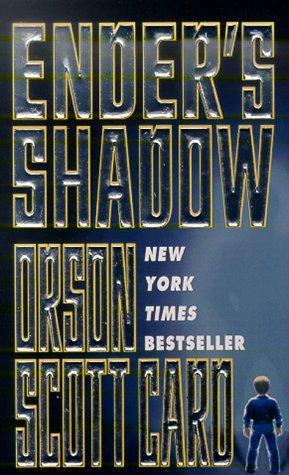
Ender's shadow
by
Orson Scott Card
Published 23 Nov 2000
That's why she wasn't making the obvious moves, setting traps, blocking Ender from taking his cylinder ever closer to the planet with every swing and dodge and shift that he made. In fact, the maneuvers the Buggers were making were ludicrously wrong. For as Ender penetrated deeper and deeper into the planet's gravity well, the Buggers were building up a thick wall of forces _behind_ Ender's formation. They're blocking our retreat! At once Bean understood a third and most important reason for what was happening. The Buggers had learned the wrong lessons from the previous battles. Up to now, Ender's strategy had always been to ensure the survival of as many human ships as possible.
…
Device because the only way to use it is to destroy our own ships in the process. From the moment Ender started giving orders, it was obvious to everyone that this was a suicide run. These ships were not made to enter an atmosphere. And yet to get close enough to the planet to set off Dr. Device, they had to do exactly that. Get down into the gravity well and launch the weapon just before the ship burns up. And if it works, if the planet is torn apart by whatever force it is in that terrible weapon, the chain reaction will reach out into space and take out any ships that might happen to survive. Win or lose, there'd be no human survivors from this battle.

Infinity in the Palm of Your Hand: Fifty Wonders That Reveal an Extraordinary Universe
by
Marcus Chown
Published 22 Apr 2019
Incredibly, in 2010, physicists at the National Institute of Standards and Technology in the United States were able to show that, if you stand on one step of a staircase, you age faster than a person standing one step below you. They did this by using two super-accurate atomic clocks, one on each step.2 So why do you age more slowly in strong gravity? Well, it was Einstein’s genius in 1915 to realize that the force of gravity doesn’t actually exist. That’s right, it is an illusion! This takes a bit of getting your head around. But imagine you wake up in a rocket in empty space, which is accelerating at 1g. You find that your feet are glued to the floor, and you are able to walk around exactly as if you are on the surface of the earth.
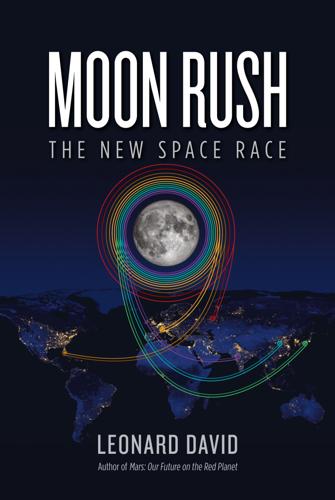
Moon Rush: The New Space Race
by
Leonard David
Published 6 May 2019
More recently, orbiters and on-the-spot looks by landers have revealed the lunar countryside to be rich in abundant resources. Some space aficionados optimistically suggest that quadrillions of dollars worth of valuable minerals may exist on the Moon in the form of water, helium-3, and rare-earth minerals. The Moon, in a sense, is an oversize Earth-orbiting space station, a natural satellite outside of Earth’s gravity well, rife with raw materials that can be put to practical use. Speckling its hostile surface and flying above the world are robotic spacecraft, readying the welcome mats for the next round of human adventurers. Some envision putting up arrays of science gear to probe the surrounding universe while others want to use the barren surface as backdrop for collecting solar energy to empower our own planet.

The Cryptopians: Idealism, Greed, Lies, and the Making of the First Big Cryptocurrency Craze
by
Laura Shin
Published 22 Feb 2022
Fuze and Catan. Microsoft, Redhat, ubuntu, and tomorrow, Deloitte. In the office by $2, surf and turf at $10, EEA news so just buy the fucking dip. Pizza, polyamory and psychedelic shorts; that spooksexy, freakynaughty, that good meshy love. CC: everyone and invoice Wendycoin. Views from atop a gravitational well, white, yellow, mauve, polkadotted skies and Bogartian sunsets. (Some of the references were to how there wasn’t assigned seating but shared tables, a collaboration ConsenSys’s blockchain music project had done with musician Imogen Heap for her song “Tiny Human,” and how, after a while, an employee from China who went by “Wendy” in the United States took over from Joe the handling of payroll via LocalBitcoins payments.

Generation X: Tales for an Accelerated Culture
by
Douglas Coupland
Published 15 Mar 1991
What were the signs that Dee might be coming home? You were saying—" The traffic is light on Sandy Boulevard as we head toward the steel bridges downtown, bridges the color of clouds, and bridges so large and complex that they remind me of Claire's New York City. I wonder if their mass will contaminate the laws of gravity. "Well, the moment one of you kids phones up and gets nostaligic for the past or starts talking about how poorly a job is going, I know it's time to put out the fresh linen. Or if things are going too well. Three months ago Dee called and said Luke was buying her her own frozen yogurt franchise.

Broken Angels
by
Richard Morgan
Published 31 Aug 2008
“Why don’t I just sell seats in here,” snapped Vongsavath. “Mistress Wardani, will you please return to the cabin and sit down.” “Sorry,” murmured the archaeologue. “I was just—” Sirens. A spaced scream, slashing at the air in the cockpit. “Incoming,” yelled Vongsavath, and kicked the Nagini on end. It was a manoeuvre that would have hurt in a gravity well, but with only the ship’s own grav field exerting force, it felt more like an experia special effect, an Angel wharf-conjuror’s trick with holoshift. Vacuum combat fragments: I saw the missile coming, falling end over end towards the right side viewports. I heard the battle systems reporting for duty in their cosily enthusiastic machine voices.
…
At no point in the first space we entered was the ceiling less than twenty metres overhead. “The floor’s flat though,” murmured Sun Liping, kneeling to brush at the sheened surface underfoot. “And they had—have—grav generators.” “Origin of species.” Tanya Wardani’s voice boomed slightly in the cathedric emptiness. “They evolved in a gravity well, just like us. Zero g isn’t healthy long-term, no matter how much fun it is. And if you have gravity, you need flat surfaces to put things down on. Practicality at work. Same as the docking bay back there. All very well wanting to stretch your wings, but you need straight lines to land a spaceship.”
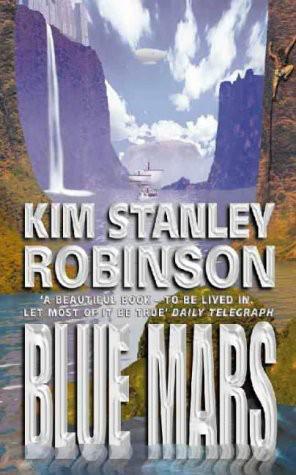
Blue Mars
by
Kim Stanley Robinson
Published 23 Oct 2010
She saw all of a sudden that they would no more do what she told them to do than would boys ordered about by a senile grandmother. They were humoring her. Figuring out how they could best put her to use. “We have to,” Kasei said. “It’s in the best interest of Mars. Not just for Reds, but all of us. We need some distance between us and Terra, and the gravity well reestablishes that distance. Without it we’ll be sucked down into the maelstrom.” It was Ann’s argument, it was just what she had been saying in the meetings in east Pavonis. “But what if they try to stop you?” “I don’t think they can,” Kasei said. “But if they try?” The two men glanced at each other.
…
“When you have no fulcrum you can’t move a world! No fulcrum, no lever, no force—” “It isn’t just Earth,” Nadia replied. “There are going to be other settlements in the solar system. Mercury, Luna, the big outer moons, the asteroids. We’ve got to be part of all that. As the original settlement, we’re the natural leader. An unbridged gravity well is just an obstruction to all that— a reduction in our ability to act, a reduction in our power.” “Getting in the way of progress,” Ann said bitterly. “Think what Arkady would have said to that. No, look. We had a chance here to make something different. That was the whole point. We still have that chance.
…
And already there had been local disagreements strong enough to have caused trouble; among the people sitting around the table were some serious enemies, Zo could tell. She watched their faces closely as the head of their delegation, Marie, laid out the Martian proposal in the most general terms: an alliance designed to deal with the massive historical-economic-numerical gravity well of Earth, which was huge, teeming, flooded, mired in its past like a pig in a sty, and still the dominant force in the diaspora. It was in the best interests of all the other settlements to band with Mars and present a united front, in control of their own immigration, trade, growth— in control of their destinies.

Disarming the Narcissist: Surviving and Thriving With the Self-Absorbed
by
Wendy T. Behary
Published 1 Jul 2013
A particularly common type of female narcissist is the victim or martyr: She might capture you with her exasperated “I’m everything to everyone” discourse on how much she does, has to do, and has done and won’t be appreciated for. This virtuoso victim is seldom more than half a breath away from her next emotive purge. Should you mention that you aren’t feeling well or that you’re running late for an appointment, she won’t miss a beat; your needs will vanish within the gravity well of her vast self-importance. Mired in her martyrdom, she will keenly sense it if you dare to disagree with or ignore her, and she’ll make you pay by pouting, sobbing, or maybe even threatening to abandon you or hurt herself. It can sometimes feel like you’ve been granted the supporting actor role in a low-budget movie: She might drop to the couch, clutching her chest and complaining of a sharp pain.
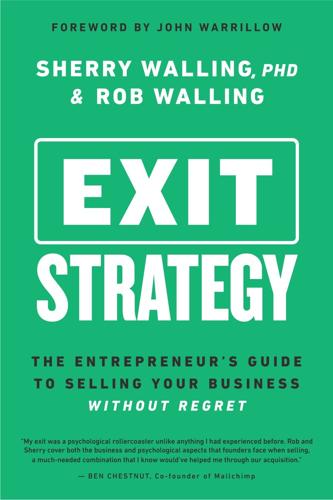
Exit Strategy
by
Sherry Walling, Rob Walling
Published 22 Nov 2024
What mistakes am I vulnerable to? Chapter 07 Collateral Damage: Minimizing Negative Impact Although selling your company might be the biggest thing going on in your life, it’s far from the only thing. However, because of its enormity, the exit process naturally creates a massive gravity well that distorts and disrupts everything around it: your health, your team, your company, your family, and the deal itself. That gravity can cause serious collateral damage if you’re not deliberate and mindful about protecting the other areas of your life. Mental Health You’re facing a major challenge: running your business day to day while simultaneously hustling for a future reality.
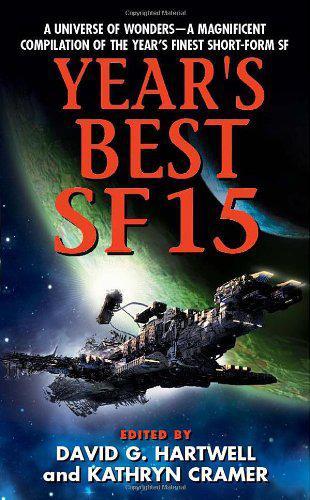
Year's Best SF 15
by
David G. Hartwell; Kathryn Cramer
Published 15 Aug 2010
I notice some fuzz in the display. “Can you clear that noise?” “It’s not noise,” the chimp reports. “It’s dust and molecular gas.” I blink. “What’s the density?” “Estimated hundred thousand atoms per cubic meter.” Two orders of magnitude too high, even for a nebula. “Why so heavy?” Surely we’d have detected any gravity well strong enough to keep that much material in the neighborhood. “I don’t know,” the chimp says. I get the queasy feeling that I might. “Set field-of-view to five hundred lightsecs. Peak false-color at near-infrared.” Space grows ominously murky in the Tank. The tiny sun at its center, thumbnail-sized now, glows with increased brilliance: an incandescent pearl in muddy water.
…
Life’s precursors abound: on comets, clinging to asteroids, suffusing nebulae a hundred lightyears across. Molecular clouds glow with organic chemistry and life-giving radiation. Their vast, dusty wings grow warm with infrared, filter out the hard stuff, give rise to stellar nurseries that only some stunted refugee from the bottom of a gravity well could ever call lethal. Darwin’s an abstraction here, an irrelevant curiosity. This Island puts the lie to everything we were ever told about the machinery of life. Sun-powered, perfectly adapted, immortal, it won no struggle for survival: where are the predators, the competitors, the parasites?

The Secret War Between Downloading and Uploading: Tales of the Computer as Culture Machine
by
Peter Lunenfeld
Published 31 Mar 2011
To get a feel for what matters in gaming it is worth revisiting their earliest history, before gaming’s visuals came to rival the realism of cinema and television. Although there was a tic-tac-toe game and a tennis simulator in the 1950s, it was really Spacewar!—developed by students at MIT in 1962 for their own amusement—that stands as the urtext of gaming. With two armed ships shooting at each other while spiraling down a gravity well, Spacewar! established a few conventions of gaming that remain powerful today. These include conflict, time limits, and graphic interaction. The game itself was a useful way to gauge the speed and accuracy of the Digital Equipment Corporation’s PDP minicomputers, and the company began to ship later units with the game in the core memory.
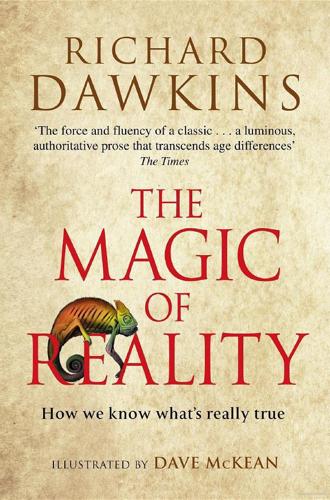
The Magic of Reality: How We Know What's Really True
by
Richard Dawkins
Published 3 Oct 2011
The ‘slow-acting hydrogen bomb’ in the interior of a star converts hydrogen to helium, the second simplest element (something else named after the Greek sun god Helios), releasing a massive amount of energy in the form of heat, light and other kinds of radiation. You remember we said that the size of a star is a balance between the outward push of heat and the inward pull of gravity? Well, this balance stays roughly the same, keeping the star simmering away for several billions of years, until it starts to run out of fuel. What usually happens then is that the star collapses into itself under the unrestrained influence of gravity – at which point all hell breaks loose (if it’s possible to imagine anything more hellish than the interior of a star already is).

Humankind: Solidarity With Non-Human People
by
Timothy Morton
Published 14 Oct 2017
Doesn’t the uncanniness of beings caught in the Uncanny Valley have to do with how they remind us of the non-manipulable, embodied, “less than human” aspect of ourselves, our very species-being? The struggle to have solidarity with life-forms is the struggle to include specters and spectrality. Without this, ecological philosophy falls into a gravity well where it becomes part of the autoimmunity machination just described. Let’s reverse engineer a concept from the Uncanny Valley. There’s a phylogenetic part (the caste system is derived from agrilogistics), and there’s an ontogenetic part (humanoids, hominids, hominins, primates and so on). The human body is a historical record of nonhuman evolution.
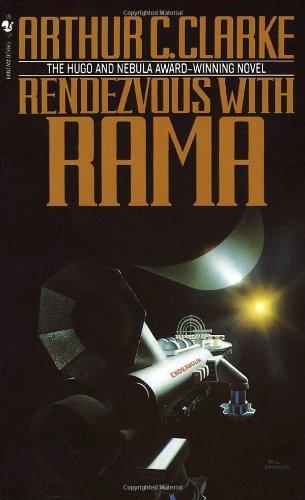
Rendezvous With Rama
by
Arthur C. Clarke
Published 27 Jun 1973
When she had travelled a hundred metres, Jimmy stopped pedalling; it was strange to see an obviously aerodynamic vehicle hanging motionless in mid-air. This must be the first time such a thing had ever happened, except possibly on a very limited scale inside one of the larger space-stations. 'How does she handle?' Norton called. 'Response good, stability poor. But I know what the trouble is - no gravity. We'll be better off a kilometre lower down.’ 'Now wait a minute- is that safe?’ By losing altitude, Jimmy would be sacrificing his main advantage. As long as he stayed precisely on the axis, he - and Dragonfly - would be completely weightless. He could hover effortlessly, or even go to sleep if he wished.

Matter
by
Iain M. Banks
Published 14 Jan 2011
It had left him alone. He really had been in full hands-on charge of it the whole time. He really had been risking his life, and he was about to lose it now. Twenty-two ships. There had been twenty-two ships; they’d agreed. Arranged in a pair of sort of staggered lines, slightly curved in tune with the planet’s gravity well. Quitrilis had gone up to have a look at them all but they were boring, just hanging there, only the one that had been there from the start even showed any sign of traffic with a few smaller craft buzzing about. The Oct Movement Monitoring and Control people had sort of shouted at him, he’d got the impression, but an Oct shouting was still a pretty involved, incomprehensible experience and he hadn’t taken much notice.
…
Syaung-un was not average; it was half a million years old, the greatest world in the Morthanveld Commonwealth and, amongst the metre-scale species of the Involveds, one of the most populous settlements in the entire galaxy. It was three hundred million kilometres in diameter, nowhere less than a million klicks thick, contained over forty trillion souls and the whole assemblage rotated round a small star at its centre. Its final, open braid of cylinders altogether easily constituted sufficient matter to produce a gravity well within which a thin but significant opportunistic atmosphere had built up over the decieons of its existence, filling the open bracelet of twisted habitat-strands with a hazy fuzz of waste gas and debris-scatter. The Morthanveld could have cleaned all this up, of course, but chose not to; the consensus was that it led to agreeable lighting effects.

The Snow Queen
by
Joan D. Vinge
Published 1 Feb 2001
The ship was constructed of the strongest, most resilient materials known to man, and equipped with counter fields to protect and stabilize its descent into the maelstrom. It was as small in size as possible, and shaped like a coin; the stabilizers kept its flat broad face always aligned with the gravitational gradients as it fell. Because the walls of the black hole's gravity well in space were so steep, if the ship ever lost its stability and began to tumble it would be ripped apart in seconds by tidal stresses. Death would come to them all in an instant's blazing agony, and their death scream would echo in that well forever. Passage through the Black Gate taxed human and mechanical endurance, and the limits of Kharemough's technology.
…
But the Black Gate was not the face of Death--only an astronomical phenomenon, a hole in space punctured at the beginning of time, falling in and in on itself. The singularity at its heart lay now somewhere in another reality, in the endless day she imagined must be heaven for the dark angels of this night's dying suns. But around that unknowable heart, the fabric of space turned inside out in the maelstrom of the black hole's gravity well. Between the outer reality of the universe she knew and the inner one of the singularity lay a zone where infinity was attainable, where space and time changed polarity and it was possible to move between them unfettered by Page 127 the laws of normal space-time. This strange limbo was riddled by wormholes, by the primordial shrapnel wounds of the universe's explosive birth and countless separate corpses of dying stars.

99%: Mass Impoverishment and How We Can End It
by
Mark Thomas
Published 7 Aug 2019
They claim that no business could survive if it ran its finances in the same way as the government. For example, UK Debt Bombshell, which claims to provide ‘no-nonsense economics’, says: We’ve been maxing out a new credit card almost every year, even in the good times. If a company were run like this, it would have long been declared bankrupt. So how much longer can we defy financial gravity? Well, we’re about to find out.7 As we saw in Chapter Eleven, however, claims that government debt is at dangerous levels are nothing more than highly effective rhetoric. The fact is that on average the UK, for example, has sustained a higher ratio of debt to GDP for the last 300 years than it has today.

Hull Zero Three
by
Greg Bear
Published 22 Nov 2010
“Destination Guidance might not have cut the shields after all,” Nell says. “When we started to combine the hulls, the drives shut down. They’re still off. We seem to be executing a turning maneuver. We’re shifting into a long-curve orbit.” “What’s that mean?” I ask. “Ship may be approaching the gravity well of a greater stellar grouping,” Tsinoy says. “We can’t see it. It’s behind an arm of the nebula. During such a maneuver, the shields temporarily switch off to reconfigure for the new angle of interstellar wind. They turn on again when the proper angle is reached.” Nell adds, “The hulls need to be separated again to restart the drives.
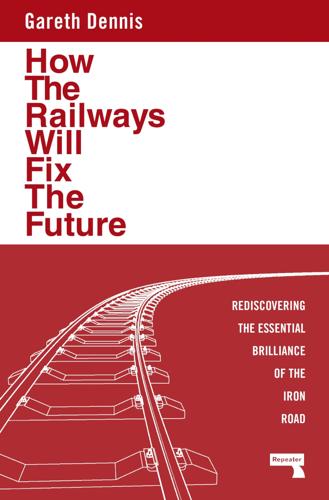
How the Railways Will Fix the Future: Rediscovering the Essential Brilliance of the Iron Road
by
Gareth Dennis
Published 12 Nov 2024
The same applies to climate solutions that include any form of carbon scraping from the atmosphere — it sounds like a wonder solution, because it is Fucking Magic. Likewise any plan for the future of transport that relies solely on the conversion of all road vehicles from internal combustion to battery electric: Fucking Magic. As the gravity well of perceived economic importance has shifted away from finance over the last two decades, an ever-greater overlap in ideas and personnel between politics and the tech industry has only exacerbated this realm of fantasy. When it comes to novel proposals in transport, the advantage that all gadgetbahn and other “new” solutions have is that they don’t exist other than in renders and the press copy that their salespeople come up with.

The Collected Stories of Vernor Vinge
by
Vernor Vinge
Published 30 Sep 2001
In fact, several men lost what little there remained to confiscate for jeopardizing this mission, and Man’s last hope. It was simply that Ilse’s makers did not believe that she could appreciate apologies or praise. Now Ilse fled up out of the solar gravity well. It had taken her eleven weeks to fall from Earth to Sol, but in less than two weeks she had regained this altitude, and still she plunged outwards at more than one hundred kilometers per second. That velocity remained her inheritance from the sun. Without the gravity-well maneuver, her booster would have had to be five hundred times as large, or her voyage three times as long. It had been the very best that men could do for her, considering the time remaining to them.
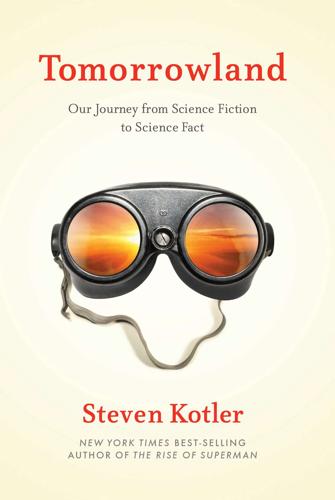
Tomorrowland: Our Journey From Science Fiction to Science Fact
by
Steven Kotler
Published 11 May 2015
But an asteroid, one that’s passing close to the Earth, is a few month’s voyage, which makes them a very good place to learn to crawl. Even more important to our off-world plans is water. “Most aerospace engineers feel,” continues Sears, “that water is the real key to off-world colonies. Carrying water out of a gravity well is extremely expensive. But there is a whole class of asteroids that are 25 percent water. We call them mudballs. So a rocket ship could stop off at an asteroid on the way to a space colony and tank up on water. There’s no cost. Just warm up a chunk and off you go.” Nor is this where possibilities end.

Toast
by
Stross, Charles
Published 1 Jan 2002
Ivan the extreme concrete geek has an arm round her shoulders; he raises his glass, too. “Lots of launch pads to rubberise!” “To NASA,” Bob echoes. They drink. “Hey, Manfred. To NASA?” “NASA are idiots. They want to send canned primates to Mars!” Manfred swallows a mouthful of beer, agressively plonks his glass on the table: “Mars is just dumb mass at the bottom of a gravity well; there isn't even a biosphere there. They should be working on uploading and solving the nanoassembly conformational problem instead. Then we could turn all the available dumb matter into computronium and use it for processing our thoughts. Long term, it's the only way to go. The solar system is a dead loss right now -- dumb all over!

Revelation Space
by
Alastair Reynolds
Published 1 Jan 2000
To get the shuttles online, Volyova would have to physically reset all those breaks — and to do that, she would have to find the map she had made, four decades earlier, of the installations. That would entail, conservatively, several days' work. Instead, she had minutes in which to act. She was sucked into — not so much a pit of despondency, as a bottomless, endlessly plummeting gravitational well. But, when she had dropped deep into its maw — and several of those precious minutes had elapsed — she remembered something; something so obvious she should have thought of it long before. Volyova began running. Khouri crashed back into the gunnery. A quick check on the status-clocks confirmed what Fazil had promised her, which was that no real time had passed.
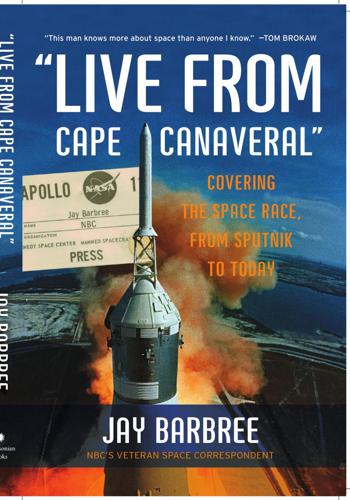
"Live From Cape Canaveral": Covering the Space Race, From Sputnik to Today
by
Jay Barbree
Published 18 Aug 2008
I was co-anchoring the NBC Radio Network’s coverage in our broadcast trailer outside Mission Control, and I laughed loudly. I knew what was about to happen. Shepard had let me in on his secret. I turned to my stunned co-anchor. “Russ, have you ever wondered how far an average golfer could hit a ball in lunar gravity? Well, Mr. Ward, you’re about to find out.” “Houston,” Shepard paused for effect, “you might recognize what I have in my hand…the handle for the contingency sample. It just so happens to have a genuine six-iron on the bottom.” Those in Mission Control were now laughing. Shepard reached into a pouch of his suit and held up a golf ball.
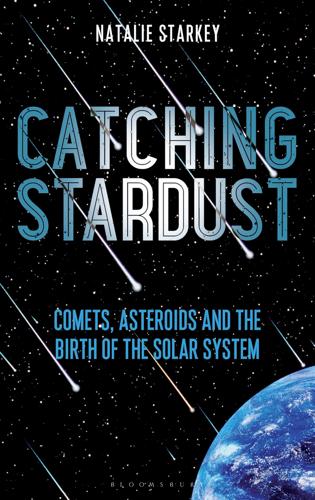
Catching Stardust: Comets, Asteroids and the Birth of the Solar System
by
Natalie Starkey
Published 8 Mar 2018
The high cost, and limited supply, of many metals on Earth makes them an obvious focus for mining efforts for anyone looking to turn a profit. However, figuring out how to efficiently mine water might be just as lucrative. The volume of water required for long-duration space missions, particularly any future missions involving humans, would result in very high launch costs from Earth – it takes a lot of energy to escape Earth’s gravity well. Water isn’t just needed for sustaining human life, but may also be useful as fuel. Future exploration of space by humans will almost certainly involve having to locate a water supply away from Earth, simply because it won’t be possible to economically, or physically, take enough on board prior to launch.

Green Mars
by
Kim Stanley Robinson
Published 23 Oct 1993
Cars were lifted up one side of the cable from Pavonis, and other cars were let down from New Clarke, providing a counterweight so that the energy needed for both operations was greatly lessened. Spaceships made their approach to the New Clarke spaceport, and when they left they were given a slingshot departure. Mars’s gravity well was therefore substantially mitigated, and all its human intercourse with Earth and the rest of the solar system made less expensive. It was as if an umbilical cord had been retied. He was in the middle of a perfectly ordinary life when they drafted him and sent him to Mars.The summons came in the form of a fax that appeared out of his phone, in the apartment Art Randolph had rented just the month before, after he and his wife had decided on a trial separation.
…
The Reds in attendance insisted that terraforming itself was an obstruction to their hopes. If the Martian surface became human-viable, they argued, then it would represent an entire Earth’s worth of land, and given the acute population and environmental problems on Earth, and the space elevator currently being constructed there to match the one already on Mars, the gravity wells could be surmounted and mass emigration would certainly follow, and with it the disappearance of any possibility of Martian independence. People in favor of terraforming, called greens, or just green, as they were not a party as such— argued that with a human-viable surface it would be possible to live anywhere, and at that point the underground would be on the surface, and infinitely less vulnerable to control or attack, and thus in a much better position to take over.
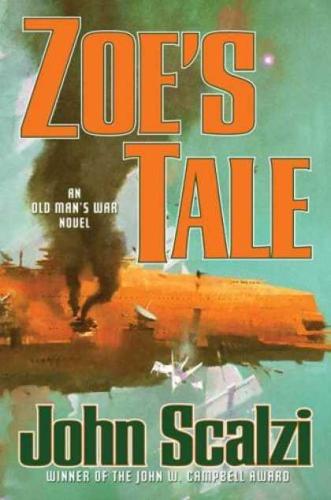
Zoe's Tale
by
John Scalzi
I put my PDA away and greeted Enzo as he came up, still holding his face. “So you got that,” he said to me. I turned and smiled at Gretchen and Savitri, as if to say, See. They both rolled their eyes. * * * * * In all, there was about a week between when the Magellan left Phoenix Station and when the Magellan was far enough away from any major gravity well that it could skip to Roanoke. Much of that time was spent watching dodgeball, listening to music, chatting with my new friends, and recording Enzo getting hit with balls. But in between all of that, I actually did spend a little bit of time learning about the world on which we would live the rest of our lives.

Schild's Ladder
by
Greg Egan
Published 31 Dec 2003
So the Quietener was ringed with countersources, their orbits timed to stretch space at the center of the device when the bodies they mimicked squeezed it, and vice versa. As Cass passed within a few kilometers of one of the counter-sources, she could see the aggregate rocky surface that betrayed its origins in Mimosa's rubble of asteroids. Every scrap of material here had been dragged out of that system's gravity well over a period of almost a thousand years, a process initiated by a package of micron-sized spores sent from Viro, the nearest inhabited world, at ninety percent of lightspeed. The Mimosans themselves had come from all over, traveling here just as Cass had once the station was assembled. The scooter's smooth deceleration brought her to a halt beside a docking bay, and she was weightless again.

Icehenge
by
Kim Stanley Robinson
Published 29 May 1994
Trying to visualize it, I could see myself as a tiny component in a single communications network, a multibank computer complex that spanned the solar system — a dish-shaped, invisible, seemingly telepathic web, a wave pattern that added one more complication to the quark dance swirling in the sun’s gravity well. So I was not in a maze, I was above it, and I could see all of it at once — and its walls formed a pattern, had a meaning, if I could learn how to read it…” I stopped and looked around. Blank faces, neutral, tolerant nods. “You know what I mean?” I asked. No answers. “Sort of,” said Elaine.

Bold: How to Go Big, Create Wealth and Impact the World
by
Peter H. Diamandis
and
Steven Kotler
Published 3 Feb 2015
“The ISS is at the back end of the longest, most complicated, and most expensive supply chain in existence. Launch costs are roughly ten thousand dollars a pound. And any object sent into space has to be durable enough to survive the eight minutes of high g-forces it takes to get out of the Earth’s gravity well—which means building heavier objects. But any additional weight imposes a double penalty: Not only does every extra pound cost extra money, but it requires extra fuel to get off the planet, which means even more money.” Plus, when parts aboard the station break, resupply can take months and months.

The Moon: A History for the Future
by
Oliver Morton
Published 1 May 2019
In fact, he deeply disagrees. Economics must take second place to ecology because the Moon faces Malthusian doom. Shipping food to the Earth and getting nothing back—no replacement for the carbon, nitrogen, endless spacey cake and endless Earthly eating phosphorus and so on that the grain shipped down the gravity well contains—means that the Moon’s otherwise-closed ecology has a gaping hole in it, as frightening as an air-sucking meteorite puncture in a hab. The stuff of life is leaking away. “The Moon Is a Harsh Mistress” is thus an environmental novel. Indeed it is an Anthropocene one, as long as one remembers that the Moon’s branch of the Anthropocene is an inversion of the Earth’s, as well as an extension of it.

A Devil's Chaplain: Selected Writings
by
Richard Dawkins
Published 1 Jan 2004
If you think about it, a collection that includes a fruit fly and Richard Dawkins and the Great Barrier Reef is an awkward set of objects to try and compare. Douglas laughed at himself, and at his own jokes. It was one of many ingredients of his charm. There are some oddities in the perspective with which we see the world. The fact that we live at the bottom of a deep gravity well, on the surface of a gas-covered planet going around a nuclear fireball 90 million miles away and think this to be normal is obviously some indication of how skewed our perspective tends to be, but we have done various things over intellectual history to slowly correct some of our misapprehensions.

Visit Sunny Chernobyl: And Other Adventures in the World's Most Polluted Places
by
Andrew Blackwell
Published 22 May 2012
There were once thirty kilometers’ worth of conveyor belts operating in Syncrude’s mine, and if you’ve ever tried to keep a conveyor belt running during a harsh northern winter—who hasn’t?—you’ve got an idea of why they finally opted for the shovel-and-truck method. To approach the bucket-wheel reclaimer was to slide into a gravity well of disbelief. It was difficult even to understand its shape. It was longer than a football field, battleship gray, its conveyor belt spine running aft on a bridge large enough to carry traffic. The machine’s shoulders were an irregular metal building several stories tall, overgrown with struts and gangways and ductwork, hunched over a colossal set of tank treads.

The Golden Thread: How Fabric Changed History
by
Kassia St Clair
Published 3 Oct 2018
His request to loosen the laces inside was denied by Mission Control, and then when he put his helmet on, he discovered a leak. ‘Hey, Jim, on those drink bags,’ he told his commander at NASA four days and one hour into the mission, ‘I tell you, it’s pretty hard to see things when you’ve got a helmet full of orange juice in zero gravity.’ ‘Well, you’ve got to drink fast,’ came the reply. Five hours later, however, the technicians on the ground began fretting about whether so much orange juice floating around in the body of the suit might cause damage. ‘Most of it, for some reason, floated up under my helmet – I mean my Snoopy hat, and I’m pretty sticky around the temples,’ Duke said, by way of reassuring them.40 By all accounts, these problems persisted.

Life's Edge: The Search for What It Means to Be Alive
by
Carl Zimmer
Published 9 Mar 2021
He ran tests on the rock that revealed it didn’t have the chemical signature of an asteroid. Instead, it had come from Mars. Four billion years ago, the rock had formed on the red planet, where it had remained until an asteroid crashed into Mars, catapulting debris into space. The rock drifted for millions of years until Earth drew it into its gravity well. Thirteen thousand years ago it fell to Antarctica. It rested in the Allan Hills as the Ice Age glaciers retreated, farmers discovered agriculture, cities rose, and rockets shot into space. When geologists finally discovered it, only eleven other Martian meteorites had ever been found. Short of sending a geologist to Mars, Allan Hills 84001 was one of the few opportunities for NASA to understand the makeup of the planet.
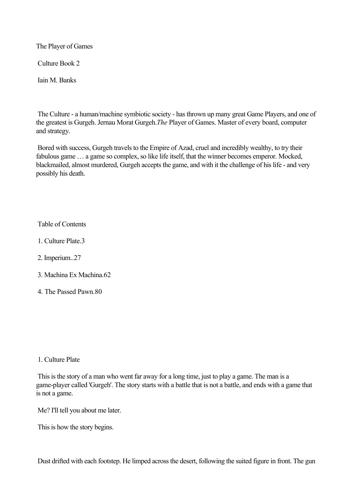
The Player of Games
by
Iain M. Banks
Published 14 Jan 2011
He and Flere-Imsaho had boarded the little craft and said their au revoirs to the old warship, which was to stand off the Empire, waiting to be recalled. The hangar blister had rotated and the module, escorted by a couple of frigates, had fallen towards the planet while theLimiting Factor made a show of moving very slowly and hesitantly away from the gravity well with the two battlecruisers. 'What's what?' Flere-Imsaho said, floating beside him, disguise discarded and lying on the floor. 'That,' Gurgeh said, pointing at the screen, which displayed the view looking straight down. The module was flying overland towards Groasnachek, Eä's capital city; the Empire didn't like vessels entering the atmosphere directly above its cities, so they'd come in over the ocean.
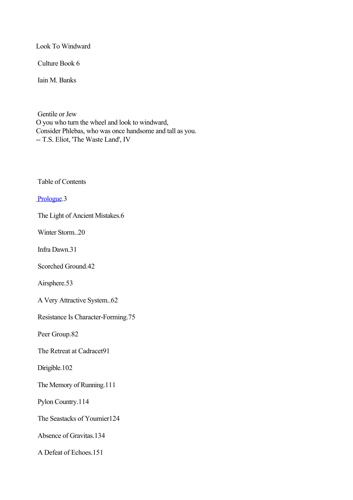
Look To Windward
by
Iain M. Banks
Published 14 Jan 2011
It nodded at the GSV, which was close and bright enough now to be casting its own light over the surrounding landscape, like a strangely rectangular golden moon floating over the world. 'Thatis the sort of thing Hub Minds can't help get worried about,' the avatar said, hoisting one silvery eyebrow. 'A trillion tonnes of ship capable of accelerating like an arrow out of a bow coming close enough to the surface for me to feel the curve of the fucker's gravity well if it wasn't fielded out.' It shook its head. 'GSVs,' it said, tutting as though over a mischievous but cute child. 'Do you think they take advantage of you because you used to be one?' Kabe asked. The giant craft seemed to have come to a halt at last, filling about a quarter of the sky. Some wispy clouds had formed underneath its lower surface.
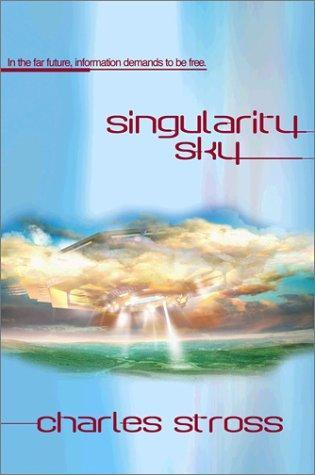
Singularity Sky
by
Stross, Charles
Published 28 Oct 2003
The former set up a wave of expansion and contraction in the space behind and in front of the ship: it was peerlessly elegant, and more than somewhat dangerous—a spacecraft trying to navigate through the dense manifold of space-time ran the risk of being blown apart by a stray dust grain. The jump drive was, to say the least, more reliable, barring a few quirks. A spaceship equipped with it would accelerate out from the nearest star's gravity well. Identifying a point of equipotential flat spacetime near the target star, the ship would light up the drive field generator, and the entire spaceship could then tunnel between the two points without ever actually being between them. (Assuming, of course, that the target star was more or less in the same place and the same state that it appeared to be when the starship lit off its drive field—if it wasn't, nobody would ever see that ship again.)

Digital Wars: Apple, Google, Microsoft and the Battle for the Internet
by
Charles Arthur
Published 3 Mar 2012
Six months after that announcement, and three months before it had any Windows Phone handsets to sell, Nokia too made an operating loss on its handset business. The next two quarters were profitable; then the money began bleeding out again. By the end of 2012, both Nokia and RIM were trapped in a financial gravity well. According to Dediu’s rule of thumb – which was quickly taking on the force of a law of nature – it was only a matter of time before each would succumb, either to a takeover, merger, or breakup. Nokia’s response, as it tried to pull itself out of the dive, was to differentiate itself through phone features such as wireless charging and high-quality cameras.

Beggars in Spain
by
Nancy Kress
Published 23 Nov 2004
Consider, in our own century, the unprecedented prosperity brought about by Y-energy—and then consider that Kenzo Yagai, except to his followers, was seen as a greedy and bloodless logician, while our national adulation goes to neo-nihilist writer Stephen Castelli, to “feelie” actress Brenda Foss, and to daredevil gravity-well diver Jim Morse Luter. But most of all, as you ponder this phenomenon in your Y-energy houses, consider the current outpouring of irrational feeling directed at the “Sleepless” since the publication of the joint findings of the Biotech Institute and the Chicago Medical School concerning Sleepless tissue regeneration.

Glasshouse
by
Charles Stross
Published 14 Jun 2006
The Linebarger Cats mostly go back to their prewar activities, a troupe of historic re-enactment artists in the pay of a retiring metahuman power who has spent the past gigasecs sleeping through the chaos. But not all of us can let go and forget . . . ONCE upon a time, when I was young and immortal, I jumped off a two-kilometer-high cliff on a partially terraformed moon orbiting a hot Jupiter. There was a fad for self-sustaining biospheres and deep gravity wells and it was selling itself as a resort—that's my excuse. I did it without a parachute. Gravity was low, about three meters per second squared, but it was still a two-kilometer drop toward a waterfall that obscured the jungle canopy far below with a haze of rainbow fog. I was trying on a mythopoeic body, and as I dropped I spread my wings for the first time, feeling the tension in the enormous thin webs between the fingers of my middle-hands.
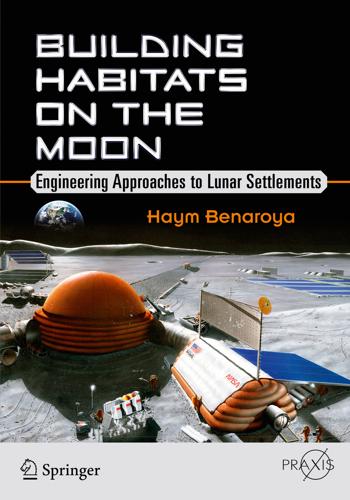
Building Habitats on the Moon: Engineering Approaches to Lunar Settlements
by
Haym Benaroya
Published 12 Jan 2018
Initially promising with a dense atmosphere, liquid water and perhaps the possibility of primitive life, it is now a frigid (average surface temperature of minus 82 degrees Fahrenheit), poisonous (remnant atmosphere of mostly CO 2 and perchlorate-infused regolith approximately one percent concentration planet-wide), radiation-soaked, sterile (as far as we know), dead-end-destination ghost of a planet with only 50 percent the ambient sunlight of Earth. It exists at the bottom of a large gravity well that’s too big for rockets and (very likely) too small for people, plants and animals. Mars should be pitied, not coveted. There is absolutely nothing of any value except for the singular exception of raw materials to synthesize propellant to get off Mars! Mars colonization is a ‘zombie’ idea; that is, one that died previously (when Mariner 4 sent back the first close up pictures in 1965) but like ‘real’ zombies, ‘Mars colonization’ still lifelessly roams the intellectual landscape wreaking havoc among the living.
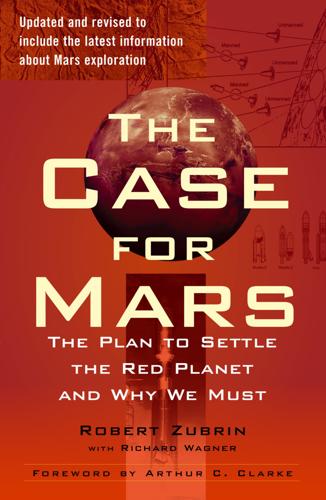
Case for Mars
by
Robert Zubrin
Published 27 Jun 2011
The spacecraft voyages across the solar system with an initial velocity not of 3 km/s, but 33 km/s, more than twenty times the speed of an Apollo command module. (You can’t use this “moving platform” effect to help you reach the Moon, because the Moon is moving about the Sun in company with the Earth.) As it climbs out of the Sun’s gravity well to move outward from the orbit of Earth to that of Mars, it trades some of the kinetic energy associated with this velocity into potential energy, and so slows down a bit, but it’s still moving very fast. Fortunately, Mars will be cruising along its orbit with a velocity of 24 km/s in roughly the same direction as the spacecraft.
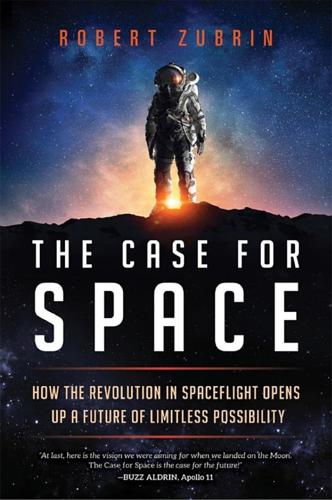
The Case for Space: How the Revolution in Spaceflight Opens Up a Future of Limitless Possibility
by
Robert Zubrin
Published 30 Apr 2019
Advanced propulsion systems on board, such as nuclear electric propulsion or fusion, could then be used to accelerate the system even more subsequent to departure. Thus, once there is helium-3 commerce to be supported in the outer solar system, Jupiter, using the resources of its outer moons and its gravity well, could develop as an important solar system transportation node. Nineteenth-century New Englanders thought they had an unmatchable racket going selling ice. Imagine the envy of those sharp-minded old-time Yankees if they could awake from their graves and look into the future to see Callisto colonists selling…gravity!

What Technology Wants
by
Kevin Kelly
Published 14 Jul 2010
Speed Trend Curve. The U.S. Air Force’s plot of historical speed records up to the 1950s and their expectations of the fastest speeds in the near future. The curve said they could have machines that attained orbital speed . . . within four years. And they could get their payload right out of Earth’s immediate gravity well just a little later. They could have satellites almost at once, the curve insinuated, and if they wished—if they wanted to spend the money, and do the research and the engineering—they could go to the Moon quite soon after that. It is important to remember that in 1953 none of the technology for these futuristic journeys existed.
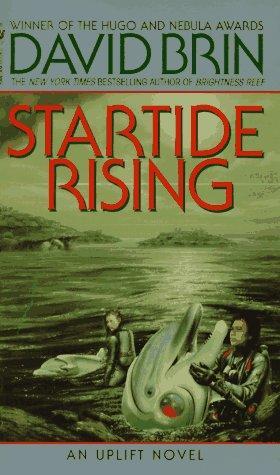
Startide rising
by
David Brin
Published 1 Mar 1984
Startide Rising Uplift Book 2 By David Brin Prologue FROM THE JOURNAL OF GILLIAN BASKIN Streaker is limping like a dog on three legs. We took a chancy jump through overdrive yesterday, a step ahead of the Galactics who are chasing us. The one probability coil that had survived the Morgran battle groaned and complained, but finally delivered us here, to the shallow gravity well of a small population-II dwarf star named Kthsemenee. The Library lists one habitable world in orbit, the planet Kithrup. When I say “habitable,” it’s with charity. Tom, Hikahi, and I spent hours with the captain, looking for alternatives. In the end, Creideiki decided to bring us here. As a physician, I dread landing on a planet as insidiously dangerous as this one, but Kithrup is a water world, and our mostly-dolphin crew needs water to be able to move about and repair the ship.
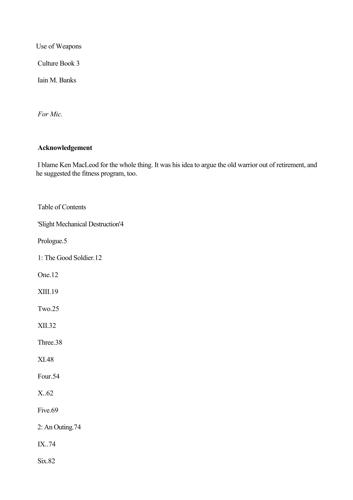
Use of Weapons
by
Iain M. Banks
Published 14 Jan 2011
The intruder looked mildly surprised. 'Oh, I'm here to take you out, Ethnarch. You are going to be removed. Now...' he laid the gun on the broad top of the bed footboard. The Ethnarch stared at it. It was too far away for him to grab, but... 'The story,' the intruder said, settling back in the chair. 'Once upon a time, over the gravity well and far away, there was a magical land where they had no kings, no laws, no money and no property, but where everybody lived like a prince, was very well-behaved and lacked for nothing. And these people lived in peace, but they were bored, because para-dise can get that way after a time, and so they started to carry out missions of good works; charitable visits upon the less well-off, you might say; and they always tried to bring with them the thing that they saw as the most precious gift of all; know-ledge; information; and as wide a spread of that information as possible, because these people were strange, in that they despised rank, and hated kings... and all things hierarchic... even Ethnarchs.'

The Speed of Dark
by
Elizabeth Moon
Published 1 Jan 2002
I feel it with my fingers—someone has stuck gum or candy there and the cleaning compound hasn’t taken it all.Once I notice it, I can’t not notice it. I slide my brochure between me and the rough spot. Page 42 Finally the program moves out of history and into the present. The latest space-probe photographs of the outer planets are spectacular; the simulated flybys almost make me feel that I could fall out of my seat into the gravity well of one planet after another. I wish I could be there myself. When I was little and first saw newscasts of people in space I wanted to be an astronaut, but I know that’s impossible. Even if I had the new LifeTime treatment so I would live long enough, I would still be autistic. What you can’t change don’t grieve over, my mothersaid.

Foundation's Edge
by
Isaac Asimov
Published 28 Dec 2010
She said, “There’s no feeling of acceleration.” “It’s a gravitic drive,” said Pelorat. “Everything accelerates together, ourselves included, so we don’t feel anything.” “But how does it work, Pel?” Pelorat shrugged. “I think Trev knows,” he said, “but I don’t think he’s really in a mood to talk about it.” Trevize had dropped down Gaia’s gravity-well almost recklessly. The ship responded to his direction, as Bliss had warned him, in a partial manner. An attempt to cross the lines of gravitic force obliquely was accepted—but only with a certain hesitation. An attempt to rise upward was utterly ignored. The ship was still not his. Pelorat said mildly, “Aren’t you going downward rather rapidly, Golan?”
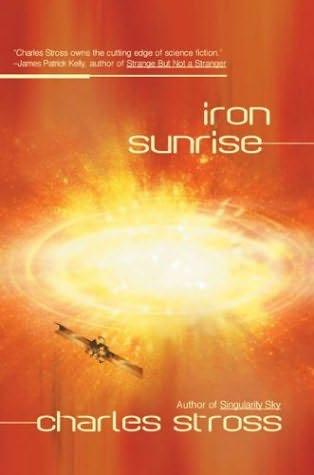
Iron Sunrise
by
Stross, Charles
Published 28 Oct 2004
When the guts were scooped out of the star and replaced with a tiny cannonball of cold degenerate matter, the outer layers of the star, held away from the core by radiation pressure, began to collapse inward across a gap of roughly a quarter million kilometers of cold vacuum. The outer shell rushed in fast, accelerating in the grip of a stellar gravity well. Minutes passed, and from the outside the photosphere of the star appeared to contract slightly as huge vortices of hot turbulent gas swirled and fulminated across it. Then the hammerblow of the implosion front reached the core … There was scant warning for the inhabitants of the planet that had been targeted for murder.

The God Delusion
by
Richard Dawkins
Published 12 Sep 2006
The difference doesn’t really matter for present purposes, except that the second interpretation already takes care of Haldane’s ‘any’ philosophy. The dedicatee of this book made a living from the strangeness of science, pushing it to the point of comedy. The following is taken from the same extempore speech in Cambridge in 1998 that I quoted in Chapter 1: ‘The fact that we live at the bottom of a deep gravity well, on the surface of a gas-covered planet going around a nuclear fireball ninety million miles away and think this to be normal is obviously some indication of how skewed our perspective tends to be.’ Where other science-fiction writers played on the oddness of science to arouse our sense of the mysterious, Douglas Adams used it to make us laugh (those who have read The Hitchhiker’s Guide to the Galaxy might think of the ‘infinite improbability drive’, for instance).
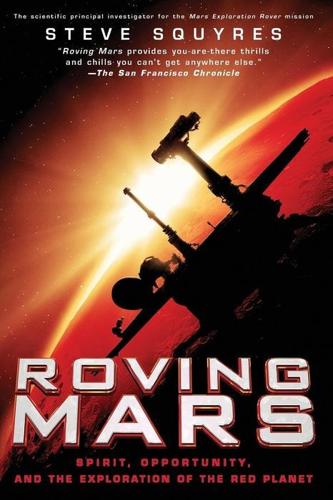
Roving Mars: Spirit, Opportunity, and the Exploration of the Red Planet
by
Steven Squyres
Published 2 Aug 2005
One minute to entry. Altitude 121 miles. This is it. Projected on the screen at the far end of the room are two displays. One is the crucial Doppler curve: an evolving green line against a bright white background, beginning to bend perceptibly now as our spacecraft starts to fall down the martian gravity well. Spirit is traveling more than 12,000 miles an hour. The other display shows the acceleration tones, the signals from the spacecraft that indicate that it’s beginning to feel the friction with the martian atmosphere. We’ve been on accel tone one for a while, but now they begin to tick upward: accel tone two, then accel tone three.
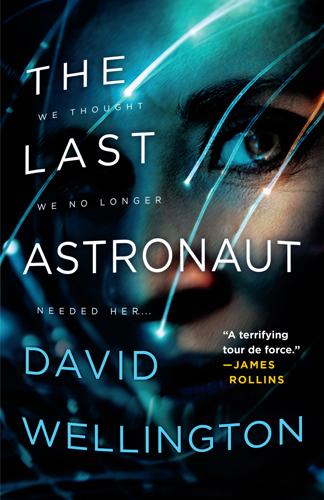
The Last Astronaut
by
David Wellington
Published 22 Jul 2019
She had no reason to assume that Foster and his crew had headed in that direction, rather than right or left around the curve of the drum, but she had to start somewhere. She paused every five minutes or so, both so she could try the radio again and because walking was exhausting. If their suits had been heavy and unwieldy in microgravity, they’d certainly never been designed for use at the bottom of a gravity well. They were each carrying an extra thirty kilograms on their back just to keep them alive, and every step sapped some of her energy. “Seven kilometers down the slope means five kilometers down in elevation,” Stevens said, working out a math problem, maybe to fill the silence. “Back at the airlock I didn’t think to actually time the rotation of the drum, but it felt like about one rotation every two and a half minutes.
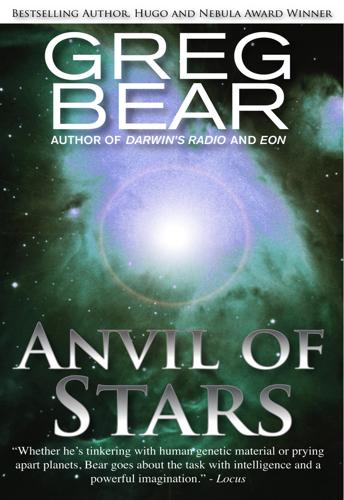
Anvil of Stars
by
Greg Bear
Published 4 Mar 2008
Martin considered this, saw nations arising, people disagreeing, history raising its ugly head, the inevitable round of Eden’s end and reality’s beginning. But he did not tell Theresa what she already knew. Fantasies were almost as important as fuel at this point. “Do you think they’ll know when they die?” Theresa asked. Martin understood whom she meant. Down at the bottom of the gravity well, on the planets. The Killers. “If they’re still alive…” Martin said, raising his eyebrows. “If there’s anybody still there, still conscious…not a machine.” “Do you think they can be conscious if they’ve become machines?” “The moms don’t tell us about such things,” Martin said. “Can they be guilty if they’re just machines now?”

Excession
by
Iain M. Banks
Published 14 Jan 2011
It was the remnant of a catastrophe which had occurred over four billion years earlier, when the planet of whose core it had been part had been struck by another large body. Expelled from its own solar system by that cataclysm, it had wandered between the stars for a quarter of the life of the universe, uncaptured by any other gravity well but subtly affected by all it passed anywhere near. It had been discovered drifting in deep space a millennium ago by a GCU taking an eccentrically trajectorial course between two stellar systems, it had been given the brief examination its simple and homogeneous composition deserved and then had been left to glide, noted, effectively tagged, untouched, but given the name Pittance.
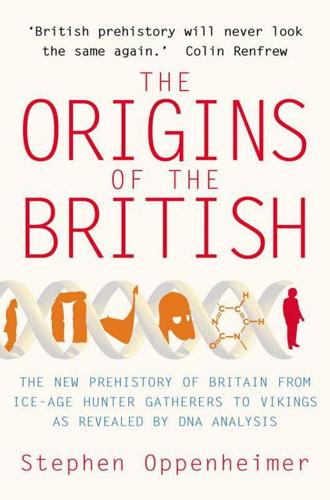
The Origins of the British
by
Stephen Oppenheimer
Published 1 Jul 2007
But like I1a-3 – and unlike I1a-2 – it favours Oslo (9%) and Bergen (8%) rather more than Denmark and Frisia (4% each). Like I1a-2, I1a-4 has a scattered distribution in eastern England and around the British coast, and an age suggesting a Neolithic or Late Mesolithic entry (Figure 5.7).79 I1a-7 is the most southerly of the Ian clusters, having a centre of gravity well below Norway. However, it lacks a clear Danish identity, being found equally in Denmark, north-west Germany and, particularly, Frisia, with isolated instances in northern Scandinavia, Switzerland and France. In frequency and diversity,80 I1a-7 is more British than Continental. It has a Bronze Age date in Britain accounting for 9% of British Ian types.81 As we shall see in Chapter 11, there are a number of reasons for rejecting the notion that the presence of Ian in England and eastern Britain is simply a reflection of the much later Anglo-Saxon or Viking invasion.
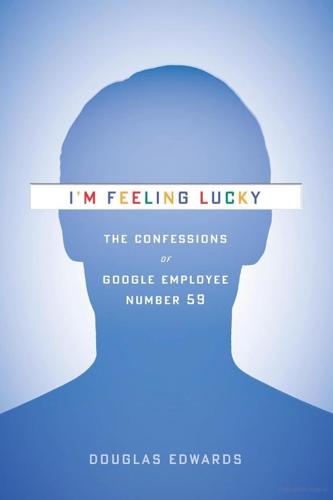
I'm Feeling Lucky: The Confessions of Google Employee Number 59
by
Douglas Edwards
Published 11 Jul 2011
April was right around the corner. My first April at Google. My first April first. My first opportunity to undertake the torqued brain aerobics and flop-sweat composition that I came to know as the Google April Fools' joke. April Fools' Day would become a perennial black hole in my calendar, a gravity well into which my attention would be sucked from increasingly great distances in time. Sergey, on the other hand, loved April Fools'. His sense of humor didn't stop at the boundaries of good taste, and when it came to April Fools', he dynamited decorum and put moderation to the torch. The cruelest month, indeed.
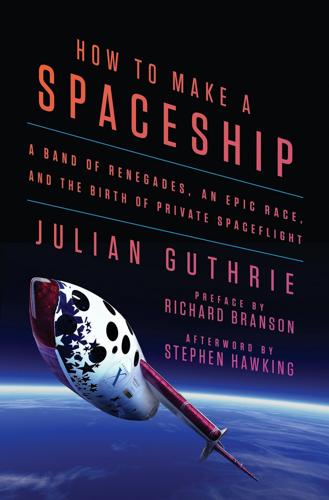
How to Make a Spaceship: A Band of Renegades, an Epic Race, and the Birth of Private Spaceflight
by
Julian Guthrie
Published 19 Sep 2016
Erik didn’t know about being anybody’s hero, but he did know that he wanted to help the XPRIZE raise much-needed operating income. The XPRIZE had lit him up when everything else in his life was dark. It made him think about how to solve problems in a different way, whether it was something grand like getting out of Earth’s gravity well into space, or running when he should probably be walking. Once reduced to a life of sitting, of barely walking, he now wanted to soar. But first, he had to live through his survival training. — The fuselage of the airplane began to fill with water, first to Erik’s feet, then to his thighs, next to his waist.
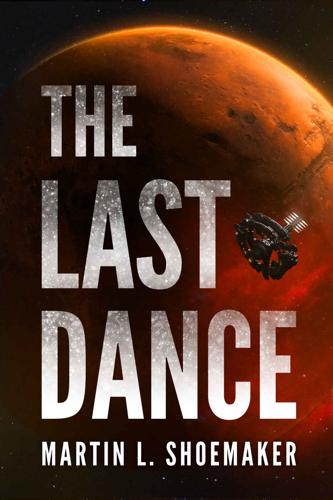
The Last Dance
by
Martin L. Shoemaker
Published 2 Nov 2019
They finished with “Brigas Nunca Mais,” a slow, languid, romantic tune that’s great to listen to but nearly impossible to dance to. The tempo’s just wrong, not quite a fast song, not quite a slow dance. But they did it, turning it into a sensual mix of pulling away but not quite out of reach, drawing swiftly together as if tugged by a gravity well, and then spinning slowly around, locked in each other’s arms. When the music finally stopped, the onlookers applauded. Smitty tells me that Nick never made it back to his hotel room that night, the first time that had ever happened. But it became a pretty regular occurrence after that. Though the reporting game continued, the tone changed, at least for Rosalia.
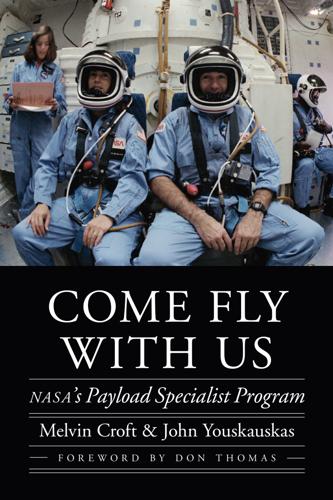
Come Fly With Us: NASA's Payload Specialist Program
by
Melvin Croft
,
John Youskauskas
and
Don Thomas
Published 1 Feb 2019
This two-stage, solid-propellant rocket motor was designed by the Boeing Company to serve as an upper booster stage for both the Titan 34D generation of rockets and the space shuttle. It could loft a five-thousand-pound payload into geosynchronous orbit or even propel NASA’s interplanetary probes out of the gravity well of Earth. The booster delivering the TDRS to its high perch above Earth would be the same type to be used by the top secret satellite Payton was preparing to fly into orbit with. The satellite was deployed flawlessly from Challenger’s payload bay while orbiting in the darkness of Earth’s shadow half a world away from Houston.
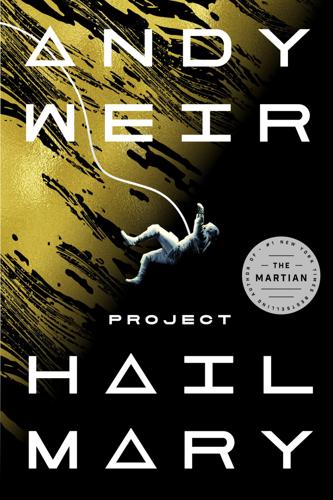
Project Hail Mary
by
Andy Weir
Published 15 May 2021
“Yeah, let’s get out of here!” I throw the spin-drive controls to full. The ship can pull up to 2 g when push comes to shove. And I think push has definitely come to shove. The ship lurches forward. This is not a graceful, well-executed burn. This is nothing short of panicked flight. The efficient way to leave a gravity well is laterally, to take advantage of the Oberth effect. I try to keep us more or less level to the ground below. I’m not trying to get away from Adrian. I just want to get into a stable orbit that doesn’t need engines to maintain. I need velocity, not distance. I need to keep the drives at full power for ten minutes.
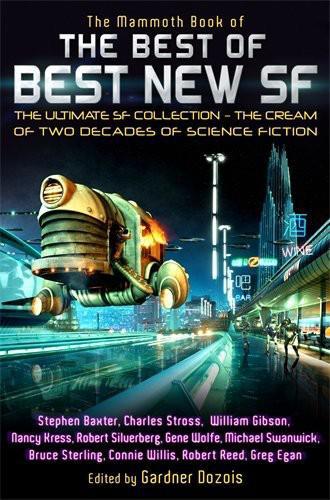
The Best of Best New SF
by
Gardner R. Dozois
Published 1 Jan 2005
The most obvious external feature of their modification was that they had an extra pair of “arms” instead of “legs,” and this meant that most of the public places in Moscoviense were designed to accommodate their kind as well as “walkers”; all the corridors were railed and all the ceilings ringed. The sight of fabers swinging around the place like gibbons, getting everywhere at five or six times the pace of walkers, was one that I found strangely fascinating, and one to which I never quite became accustomed. Fabers couldn’t live, save with the utmost difficulty, in the gravity well that was Earth; they almost never descended to the planet’s surface. By the same token, it was very difficult for men from Earth to work in zero-gee environments without extensive modification, surgical if not genetic. For this reason, the only “ordinary” men who went into the true faber environments weren’t ordinary by any customary standard.
…
Ivan the extreme concrete geek has an arm round her shoulders; he raises his glass, too. “Lots of launch pads to rubberize!” “To NASA,” Bob echoes. They drink. “Hey, Manfred. To NASA?” “NASA are idiots. They want to send canned primates to Mars!” Manfred swallows a mouthful of beer, aggressively plonks his glass on the table: “Mars is just dumb mass at the bottom of a gravity well; there isn’t even a biosphere there. They should be working on uploading and solving the nanoassembly conformational problem instead. Then we could turn all the available dumb matter into computronium and use it for processing our thoughts. Long term, it’s the only way to go. The solar system is a dead loss right now – dumb all over!

Rewired: The Post-Cyberpunk Anthology
by
James Patrick Kelly
and
John Kessel
Published 30 Sep 2007
Ivan the extreme concrete geek has an arm round her shoulders; he raises his glass, too. “Lots of launch pads to rubberize!” “To NASA,” Bob echoes. They drink. “Hey, Manfred. To NASA?” “NASA are idiots. They want to send canned primates to Mars!” Manfred swallows a mouthful of beer, aggressively plonks his glass on the table: “Mars is just dumb mass at the bottom of a gravity well; there isn’t even a biosphere there. They should be working on uploading and solving the nanoassembly conformational problem instead. Then we could turn all the available dumb matter into computronium and use it for processing our thoughts. Long term, it’s the only way to go. The solar system is a dead loss right now—dumb all over!
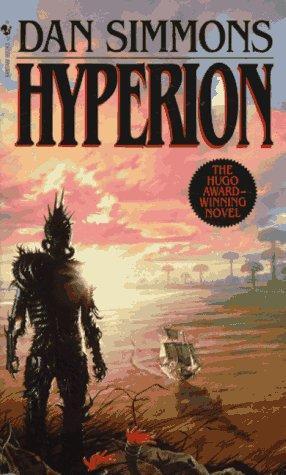
Hyperion
by
Dan Simmons
Published 15 Sep 1990
The boats undoubtedly were armed and well within range, but someone on the command circuit must have been curious. Or furious. Kassad’s squid was in no way aerodynamic. As with most ship-to-ship craft, the squid could flirt with planetary atmospheres but was doomed if it dove too deeply into the gravity well. Kassad saw the telltale red glow of reentry, heard the ion buildup on the active radio channels, and suddenly wondered if this had been such a good idea. Atmospheric drag stabilized the squid and Kassad felt the first tentative tug of gravity as he searched the console and the command chair arms for the control circuit he prayed would be there.

WTF?: What's the Future and Why It's Up to Us
by
Tim O'Reilly
Published 9 Oct 2017
Distributed solar power generation, electric vehicles, and other signs of the transition from carbon-based energy to renewables seem like they are a bit out of the frame—or are they? After all, rooftop solar shares many of the distributed network characteristics of on-demand companies like Uber and Airbnb. When making sense of the future, think in terms of gravitational cores, not hard boundaries. Just as the sun’s gravity well reaches out beyond the orbit of Pluto and encompasses not just the planets in the ecliptic but comets and planetoids with eccentric orbits, so too the forces shaping the future all have a gravitational core and a gradually attenuating influence. And just as the solar system has multiple gravitational subsystems, where the draw of the local giant keeps its own satellites in tow while all still partake in the larger dance, these interpenetrating trends influence each other and converge.
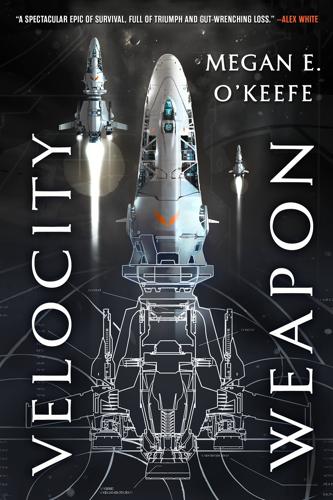
Velocity Weapon
by
Megan E. O'Keefe
Published 10 Jun 2019
Callie did not relax her smile, not for a second, even as she knew the screen would flick over to the simulation that played out on the screen inset in her desk, keeping her up on the visuals. Vector images of ships swam into view on a field of black, the moon Dralee a distant curve in the background as the patrol squad approached that liminal space on the cusp of the moon’s gravity well. Scout ships—smaller triangles—took the point position on the three-dimensional, pyramid formation, the heavier gunships holding up the middle and rear. Sergeant Greeve’s ship had been flagged with a yellow dart, tracking her path in the center of the formation. “We’ve been over the footage of the battle multiple times, of course, but this new reconstruction reveals what we missed—the moments before the first impacts occurred.

Pathfinder
by
Orson Scott Card
Published 22 Nov 2010
“All nineteen of the wallfolds will start with exactly the same combination of genes—except one.” “The one that has you,” said the expendable. “And yet I’m the one that you all claim had some kind of influence over the jump backward in time, and the duplication of the ships.” “We do not ‘claim’ it. It’s a certainty. Your mind, cut off from the gravity well of any planet, destabilized the combination of fields we created in order to make the jump past the light barrier. Theoretically, all nineteen computers on the original ship made a slightly different calculation, but your mind caused all of them to be executed at once, resulting in nineteen equivalent ships making the same bifurcated jump.”

Aerotropolis
by
John D. Kasarda
and
Greg Lindsay
Published 2 Jan 2009
Besides, they’re too hamstrung by zoning laws and the intransigence of developers to do anything other than park their clients where they want to be—next to the nearest on-ramp. This approach has its obvious flaws, the worst of which is the hideous, unsustainable sprawl barely held in check by the hub’s gravity well. All the same, Louisville and Memphis both languished until they deliberately embraced the overnight carriers calling each one home. It’s striking how their past, present, and future so closely mirror each other, just as FedEx and UPS are reflections of their futile attempts to outflank each other.
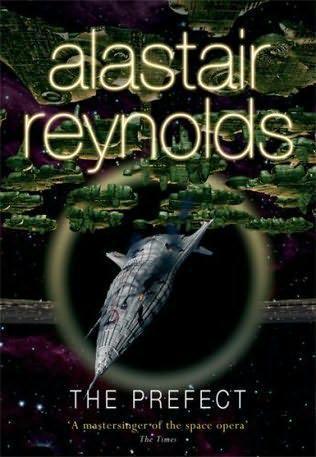
The Prefect
by
Alastair Reynolds
Published 2 Jan 2007
It hasn't run at anything like full capacity for decades, but smaller habitats occasionally contract us to build components and machines. The big enterprises on Marco's Eye will always out-compete us when it comes to efficiency and economies of scale, but we don't have to lift anything out of a gravity well, or pay Glitter Band import duties. That takes care of some of our finances." "Not all of it, though," Thalia said. "Right?" "We vote," Thory said. "So does everyone," Thalia replied. "Except for Panoply." "Not everyone votes the way we do. That's the big difference. There are eight hundred thousand people in this habitat, and each and every one of us takes our voting rights very seriously indeed."

From eternity to here: the quest for the ultimate theory of time
by
Sean M. Carroll
Published 15 Jan 2010
General relativity doesn’t predict that space and time didn’t exist before the Big Bang; it predicts that the curvature of spacetime in the very early universe became so large that general relativity itself ceases to be reliable. Quantum gravity, which we can happily ignore when we’re talking about the curvature of spacetime in the relatively placid context of the contemporary universe, absolutely must be taken into account. And, sadly, we don’t understand quantum gravity well enough to say for sure what actually happens at very early times. It might very well be true that space and time “come into existence” in that era—or not. Perhaps there is a transition from a phase of an irredeemably quantum wave function to the classical spacetime we know and love. But it is equally conceivable that space and time extend beyond the moment that we identify as “the Big Bang.”
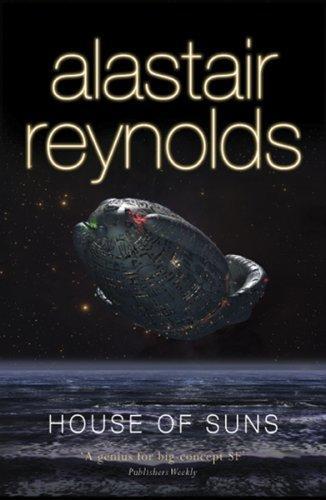
House of Suns
by
Alastair Reynolds
Published 16 Apr 2008
That was eight years ago, by my reckoning - still more time will have passed when you intercept this signal. Concentrate your sensors on the target system and you will soon see not a sun and its family of worlds, but a new nebula, a roiling dark cloud of rubble and dust and tortured gas, now bound only by the gravity well of the star itself. It will endure for centuries, thousands of years, significant fractions of a circuit. Planets and moons plough through that cloud, but not the world we hoped to make our temporary home. It’s gone, and so has most of the Line.’ Fescue paused and stroked a finger against a puffiness under one of his slitted eyes.
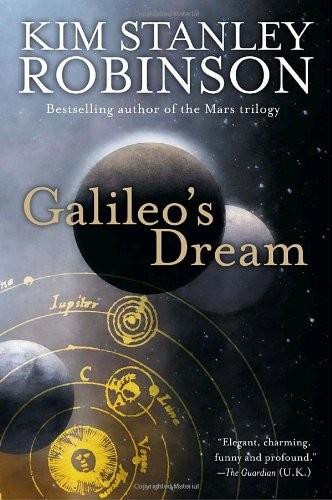
Galileo's Dream
by
Kim Stanley Robinson
Published 29 Dec 2009
The water was berry-flavored; he drank deeply, feeling suddenly very thirsty. He surveyed the dim turquoise and cobalt buildings beneath them. Europa was a world of ice, Io was a world of fire. Were Ganymede and Callisto then earth and air? “Have you had more conversation with the thing under us?” he asked Aurora. “You were telling me about it before. It seems to know gravity well, you said?” “Yes.” “What about the compound temporality, the vector of three times?” “That’s been hard to determine.” “Show me the exchanges with it.” Aurora smiled. “It’s been eleven years since the ice was broached and the sentience confirmed. Most of the interactions have come to dead ends.

Antarctica
by
Kim Stanley Robinson
Published 6 Jul 1987
Majestically they floated down the Zaneveld, over flat ice next to one of the main rubble lines, shooting over small cracks and rocks that would have eaten a snowmobile; floating down a slight incline, effortless and smooth. Carlos and X were sitting back, feeling quite pleased with themselves as Val peered suspiciously over their shoulders. Then the ice tilted downward just slightly more than it had been before, and suddenly the hovercraft was like a ball in a gravity well demonstration, speeding up distinctly, and what was worse, sliding off to the right. With a brief clatter the craft ran directly over the nearest rubble line, and then it was flying downslope-the true downslope-right toward a gnarly shear zone underlying Wiest Bluff, on the other shore of the Zaneveld.

The mote in God's eye
by
Larry Niven; Jerry Pournelle
Published 30 Jan 2011
"I-" Blaine sat rigidly for a moment, his thoughts whirling. "Well, sir, we were low on fuel and pretty close to Cal. If I'd kept pace with the probe I'd have ended up out of control and unable to keep station on it at all, assuming that McArthur's Drive didn't burn up the sail anyway. We needed the velocity to get back out of Cal's gravity well . . . and my orders were to intercept." He stopped for a moment to finger his broken nose. Merrill nodded. "One more question, Blaine. What did you think when you were assigned to investigate an alien ship?" "I was excited at the chance of meeting them, sir." "Gentlemen, he doesn't sound like an unreasoning xenophobe to me.

Genius: The Life and Science of Richard Feynman
by
James Gleick
Published 1 Jan 1992
Bader told Feynman to make two familiar calculations of the ball’s energy: its kinetic energy, the energy of its motion, and its potential energy, the energy it possesses by virtue of its presence high in a gravitational field. Like all high-school physics students Feynman was used to adding those energies together. An airplane, accelerating as it dives, or a roller coaster, sliding down the gravity well, trades its potential energy for kinetic energy: as it loses height it gains speed. On the way back up, friction aside, the airplane or roller coaster makes the same conversion in reverse: kinetic energy becomes potential energy again. Either way, the total of kinetic and potential energy never changes.

Gnomon
by
Nick Harkaway
Published 18 Oct 2017
The interesting fella asks me if I am familiar with the explanation of gravity in which space–time is a rubber sheet and each object placed on it forms a greater or lesser indentation, deforming the surface of the sheet so that other objects will roll down the incline. I agree that I have heard this description. We, the interesting fella says, meaning the Fifteen Hundred, we possess gravity. Where our gravity well touches another, there may be a collision. A man or an economy may be destroyed. In the event that one person is aware of the imminent arrival of another, the first may take steps to alleviate the danger posed by the second, up to and including seeking to make the threat go away altogether. Although this happens only very rarely, that is not the same as it never happening at all.

The Strangest Man: The Hidden Life of Paul Dirac, Mystic of the Atom
by
Graham Farmelo
Published 24 Aug 2009
The journalist Jim Crowther did not, however, stop trying to involve his retiring friend in public affairs: in mid-November 1940, he tried to persuade Dirac to attend a meeting of the Tots and Quots dining club, an informal gathering of academics who were interested in exploring how their expertise might be useful to society (the name of the club is a reference to the Latin quot homines, tot sententiae: ‘so many men, so many opinions’). Its twenty-three members in 1940 – including Bernal, Cockroft and Crowther – were often joined by guests, such as Frederick Lindemann, H. G. Wells, the philosopher A. J. Ayer and the art historian Sir Kenneth Clark.42 The location of the club’s political centre of gravity, well to the left, was reflected in the outcome of their debates, most of them held over a few bottles of wine and an indifferent meal in London’s Soho. The meeting Crowther wanted Dirac to attend, on Saturday, 23 November 1940, was scheduled to discuss Anglo-American scientific cooperation and was to take place in Christ’s College, Cambridge.
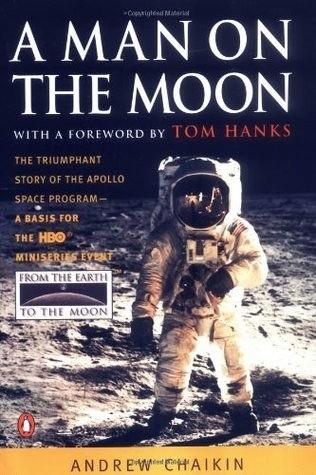
A Man on the Moon
by
Andrew Chaikin
Published 1 Jan 1994
Fortunately, the laws of celestial mechanics—whose strictness gave space flight an extraordinary predictability—made it possible to give Borman’s crew a built-in ticket home. The trajectory specialists had taken advantage of this in an elegant creation called the free return. By aiming Apollo 8 at just the right distance from the moon, they could use the lunar “gravity well” like a curve in a toboggan course, to bend its path around the moon and send it back toward earth. In theory, it was possible to fire Apollo 8 out of the starting gate so precisely that it would fly a perfect figure 8 around the moon even if Borman’s crew never touched the controls. There wasn’t a man in Kraft’s trajectory division who wasn’t so confident of this that he would have offered to go in their place.

Frommer's Hawaii 2009
by
Jeanette Foster
Published 2 Jan 2008
The free brochure is available at the Big Island Visitors Bureau, 250 Waikoloa Beach Dr., Waikoloa, HI 96738 (& 808/886-1652; www.bigisland.org). I N & A R O U N D K A I L U A - KO N A Ellison S. Onizuka Space Center Kids This small museum has a real moon rock and memorabilia in honor of Big Island–born astronaut Ellison Onizuka, who died in the 1986 Challenger space-shuttle disaster. Displays include a gravity well, which illustrates orbital motion, and an interactive rocket-propulsion exhibit, where you can launch your own miniature space shuttle. At Kona International Airport, Kailua-Kona. & 808/329-3441. www.hawaiimuseums.org/mc/ishawaii_astronaut.htm. Admission $3 adults, $1 children 18 and under. Daily 8:30am–4:30pm.

Judas Unchained
by
Peter F. Hamilton
Published 1 Jan 2006
His heart started to beat a lot faster as the carriage squeaked and rolled onward. * Oscar simply couldn’t take his eyes off Tiger Pansy. She’d caught him staring quite a few times, and he’d managed to deflect her questioning gaze with a polite half-smile. He knew it was getting close to rudeness now, but she was so out of place here her attraction was akin to a star’s gravity well. But then, would someone like her care about middle class standards of rudeness? And what does that judgement say about me? Damn, was Adam right about what I’ve become? ‘You’re going to have to stop that,’ Anna said, and moved to stand in front of him. ‘I know,’ he mumbled awkwardly. Her smile became evil.